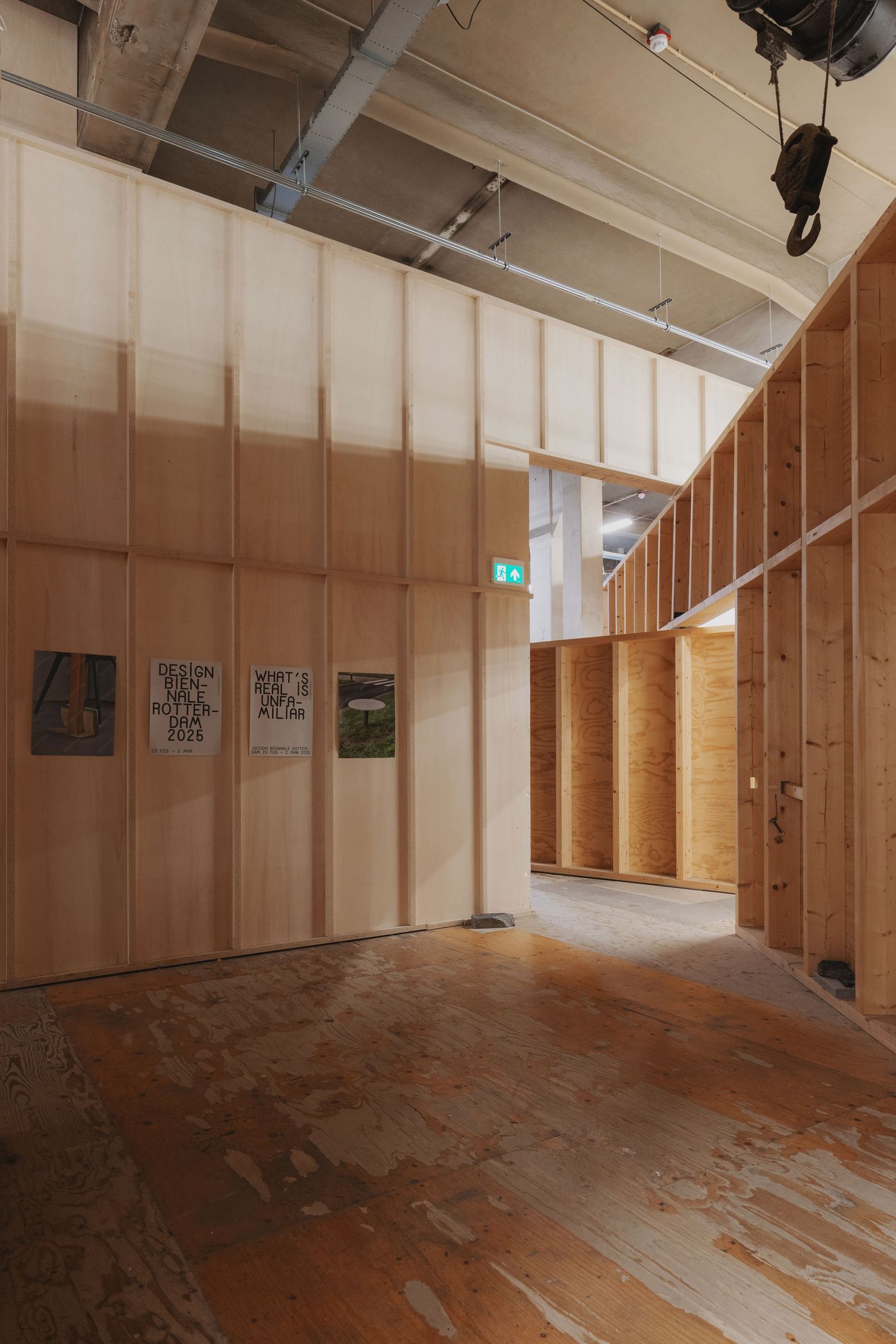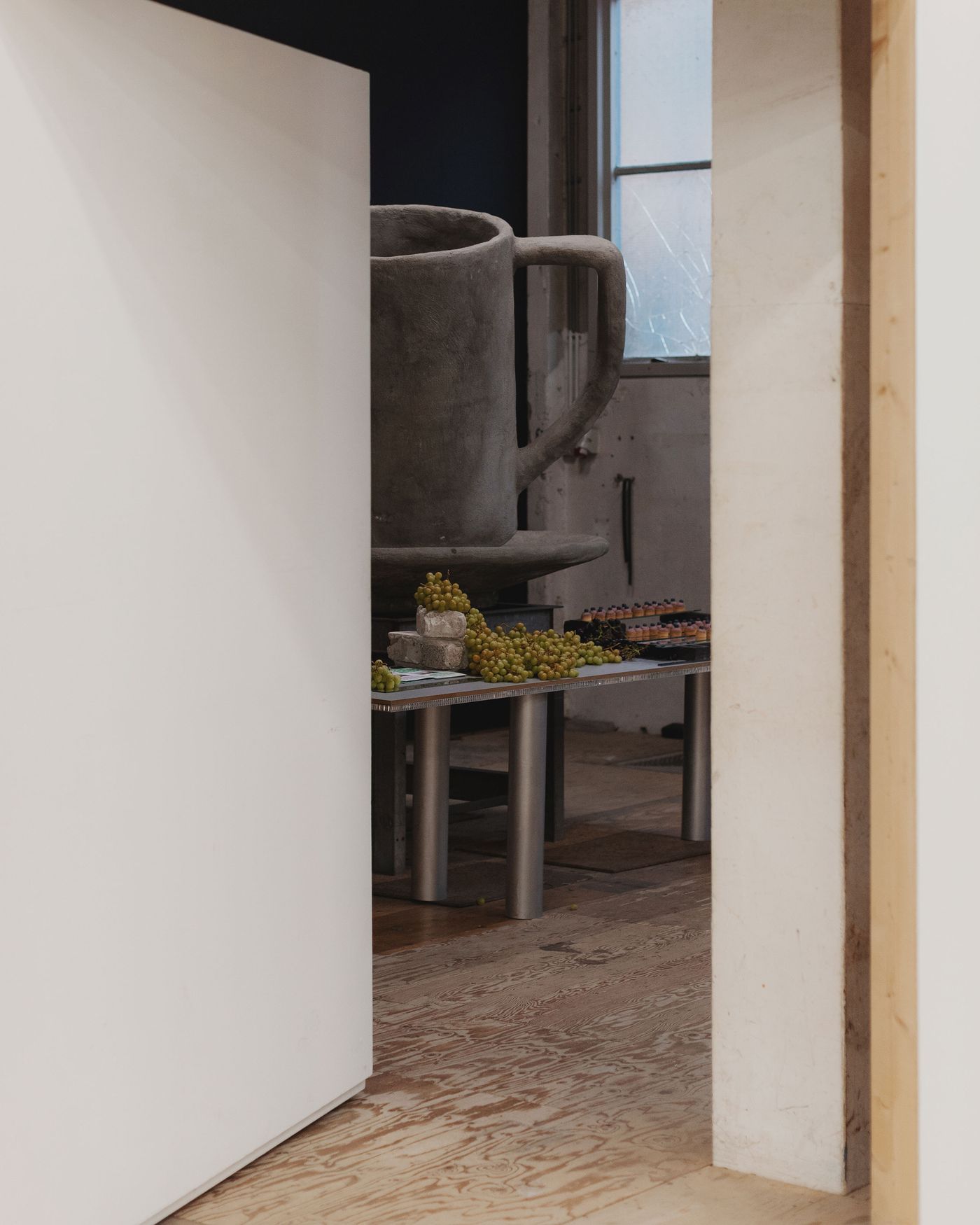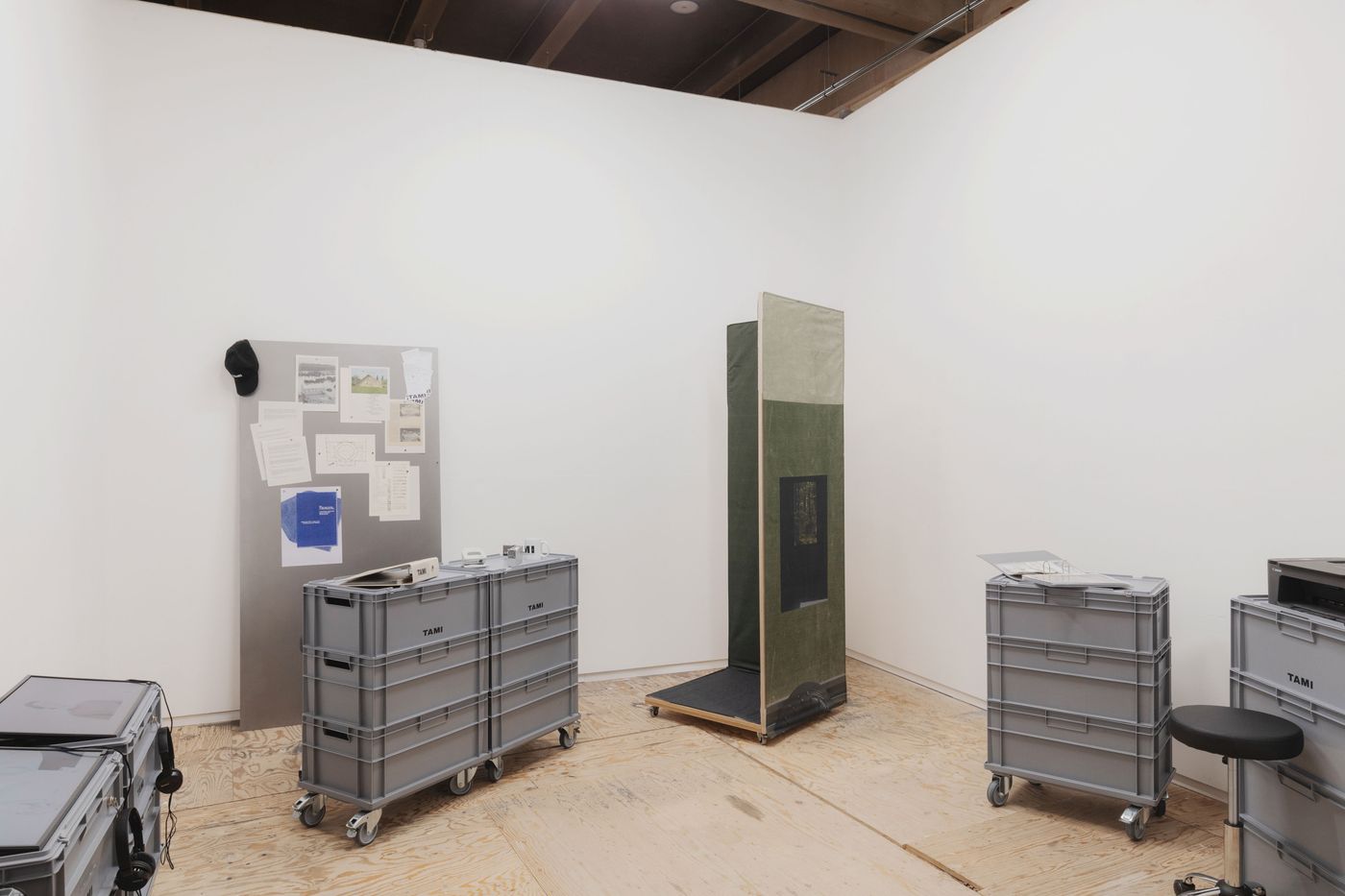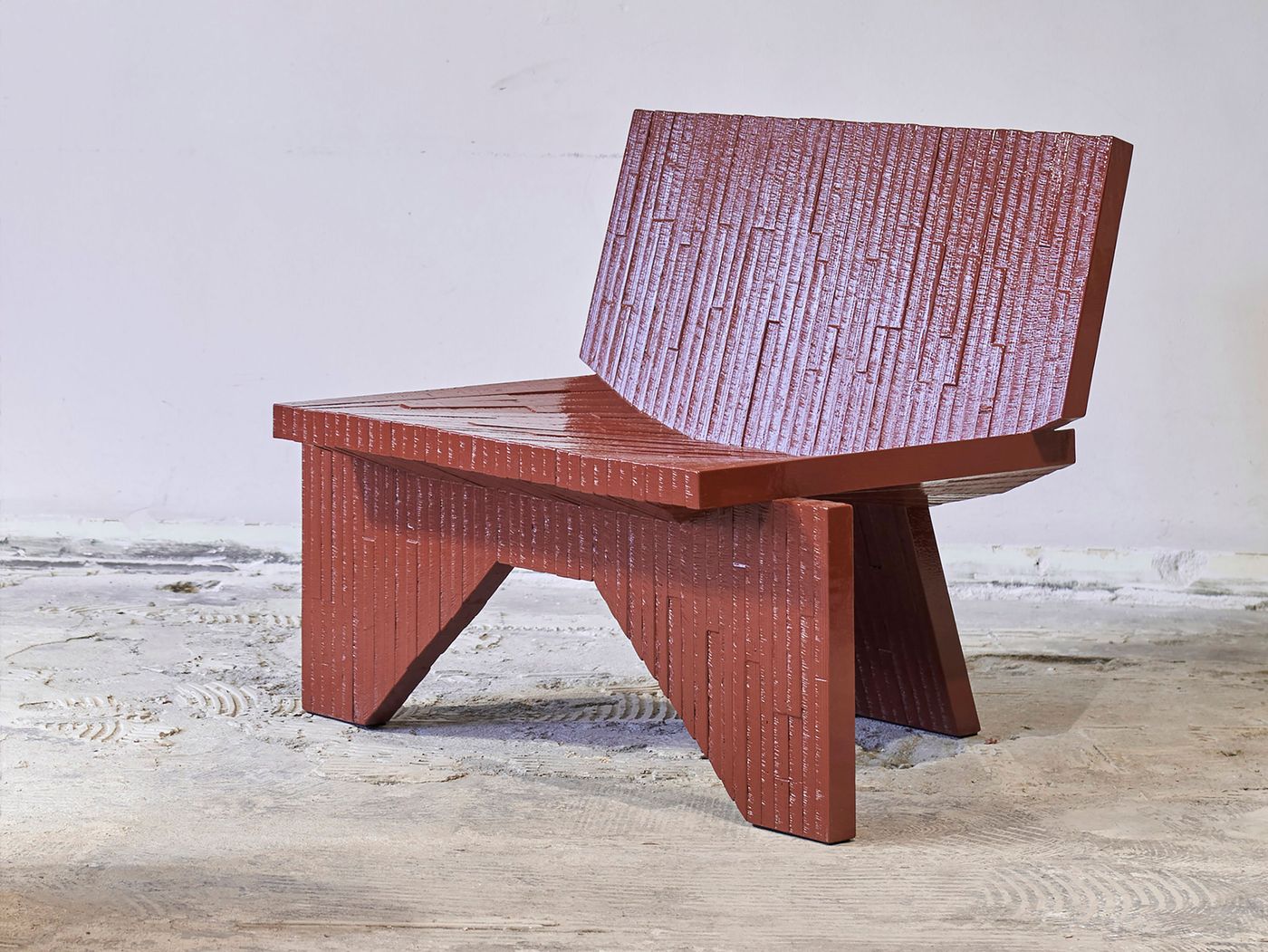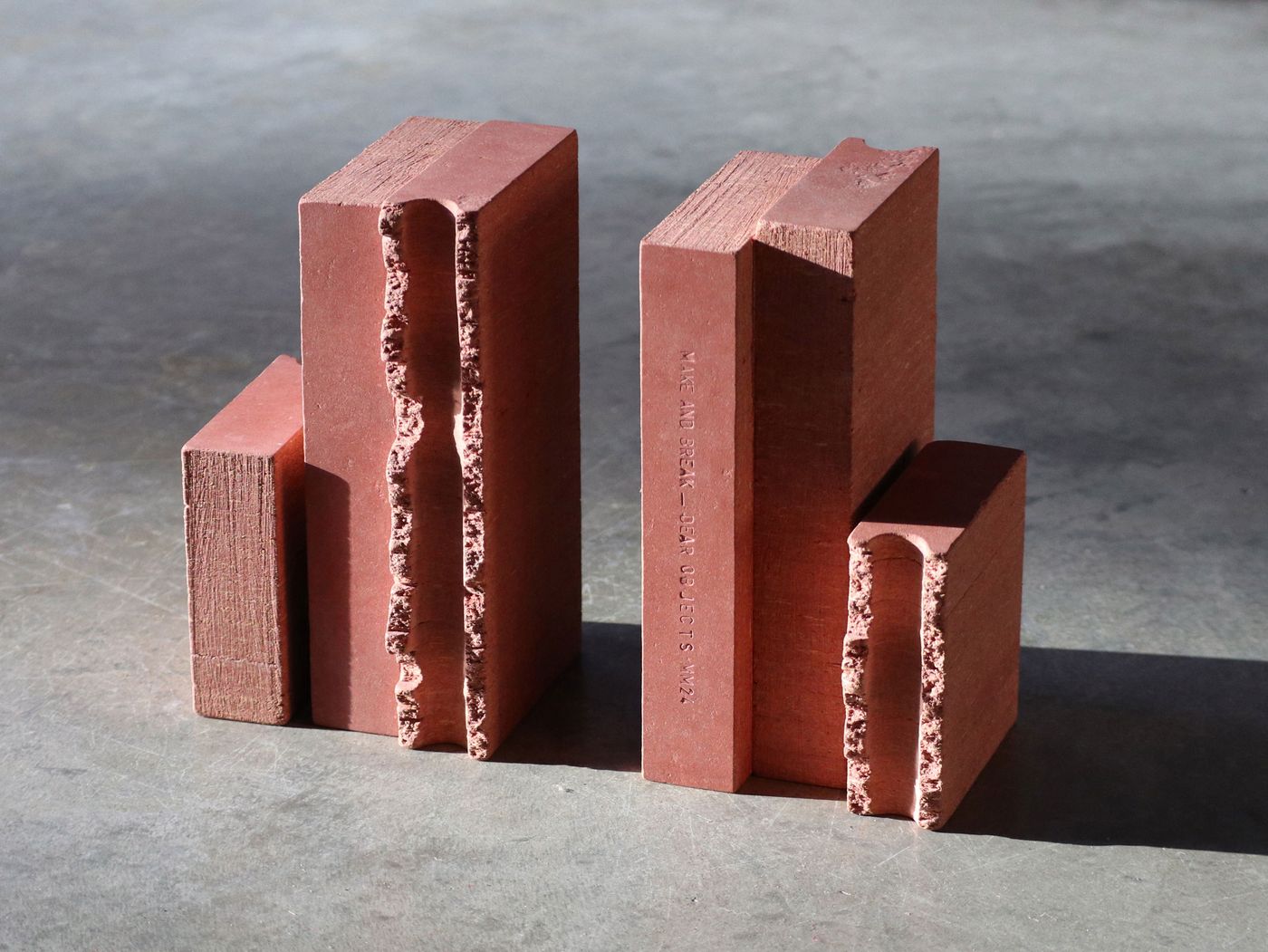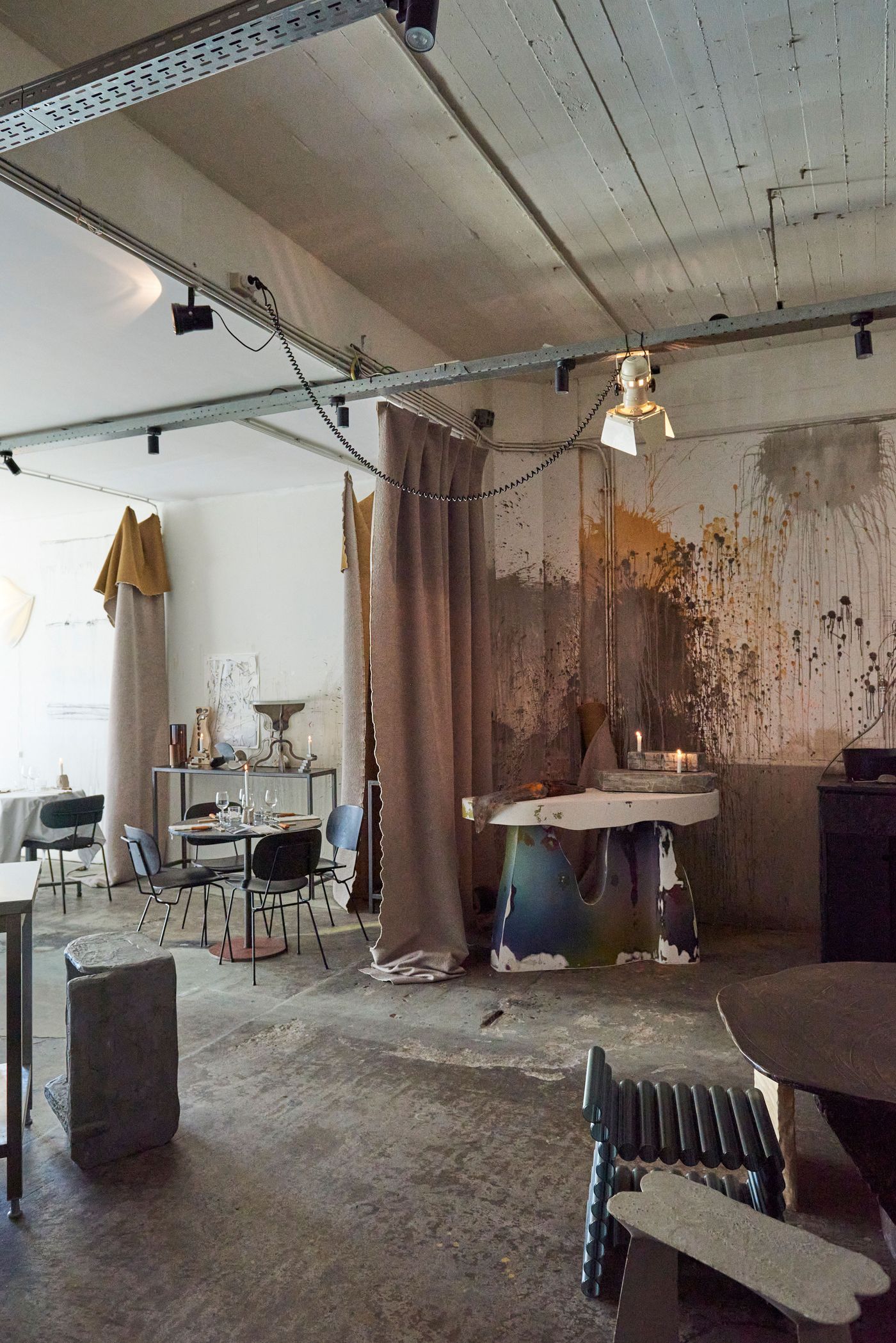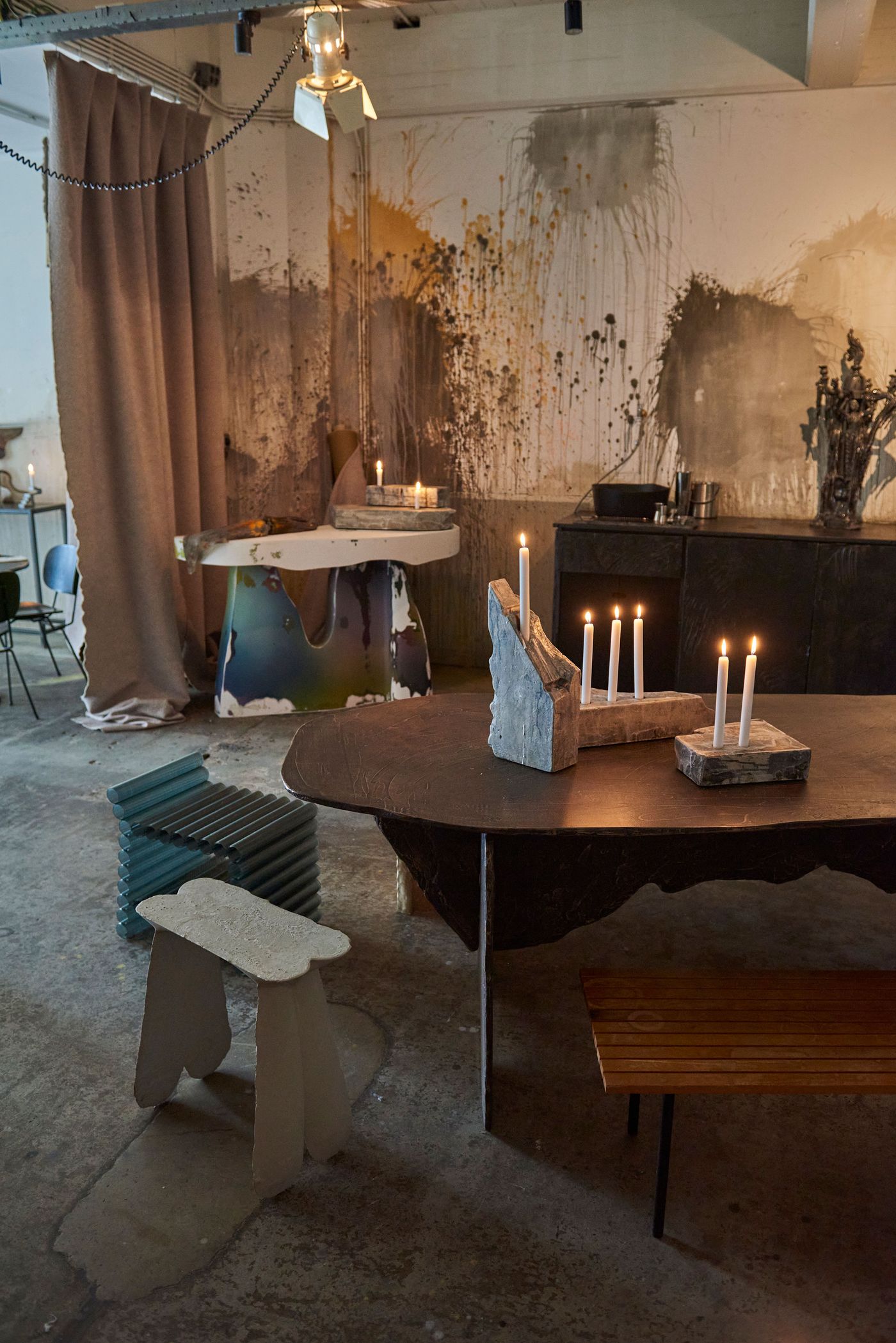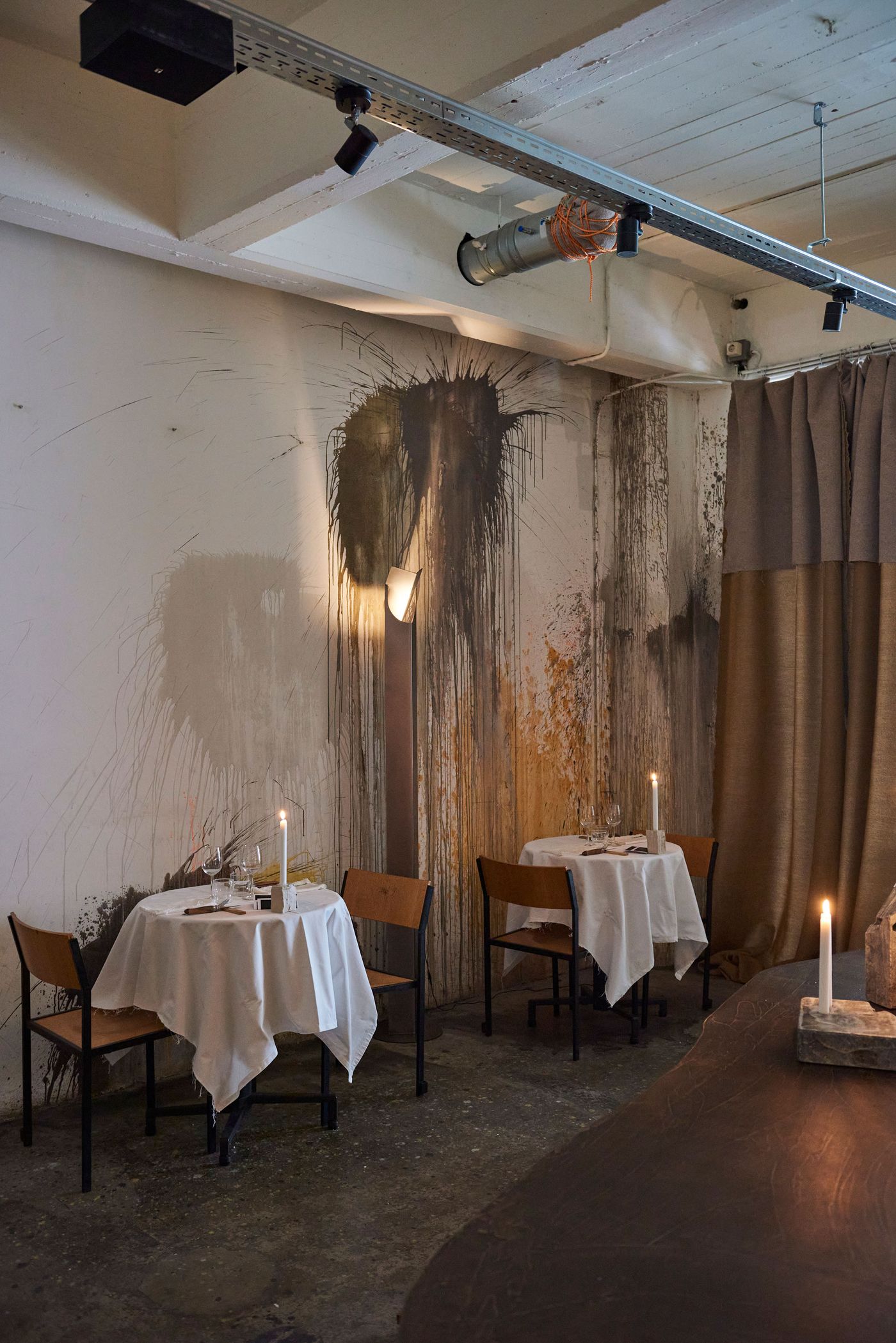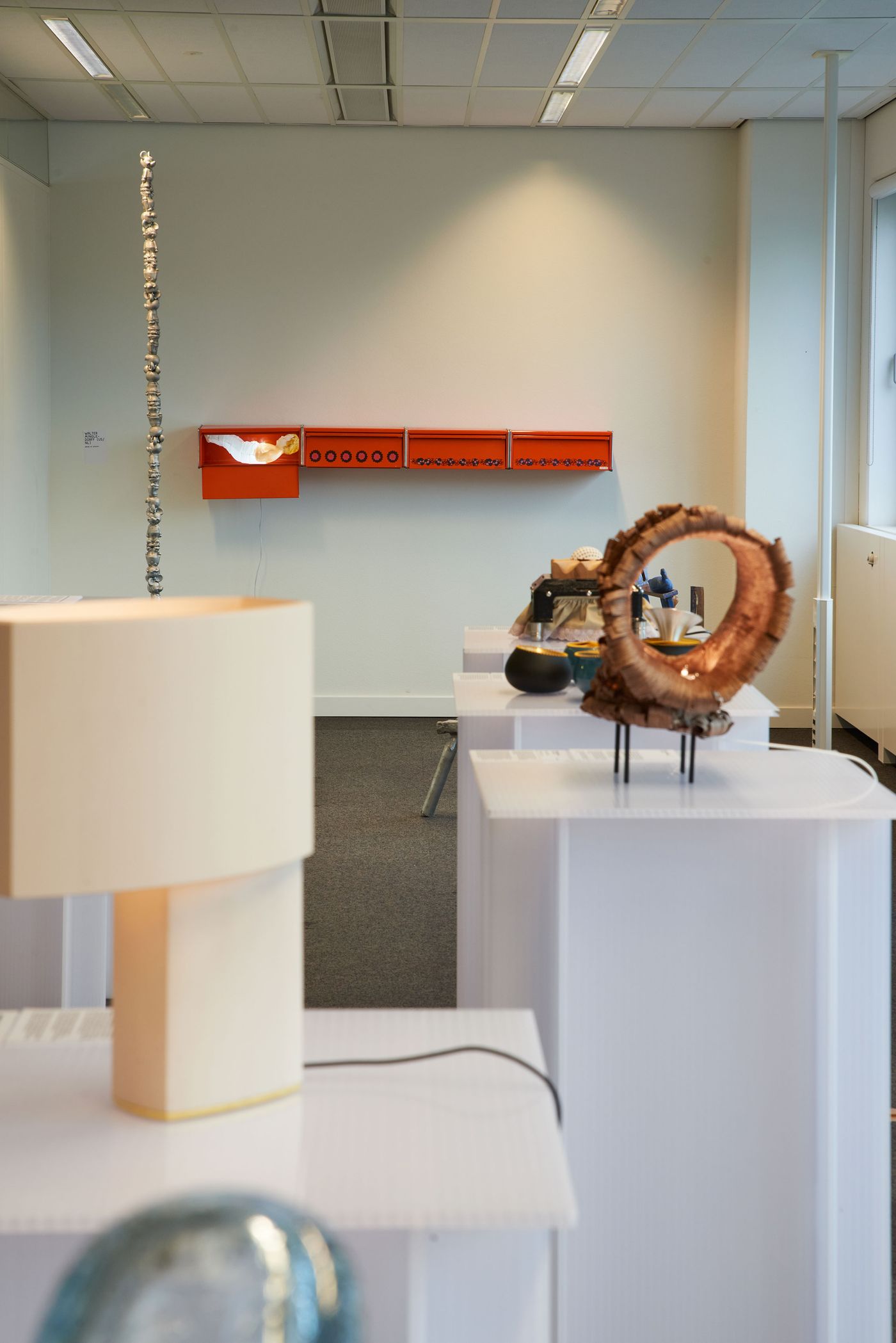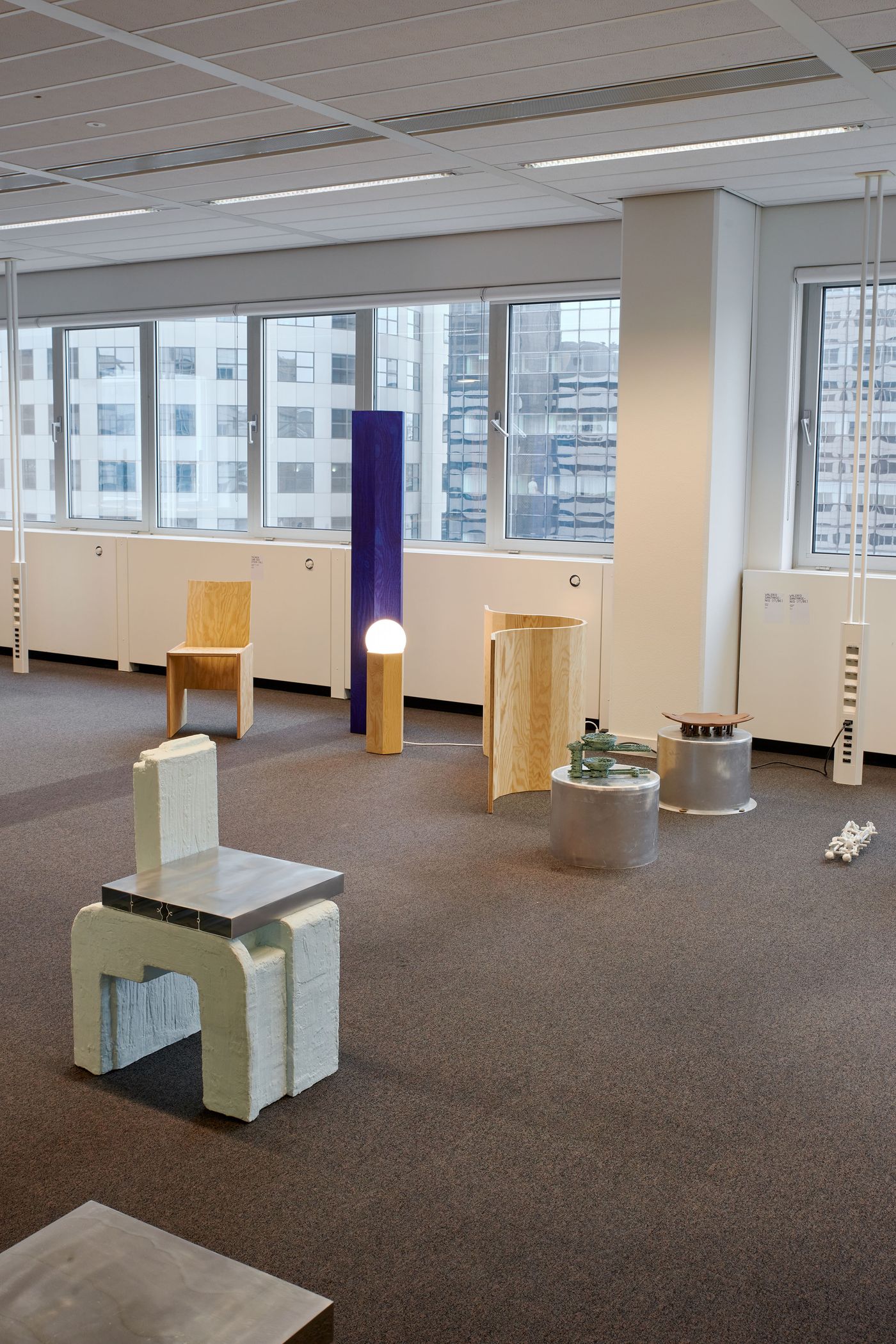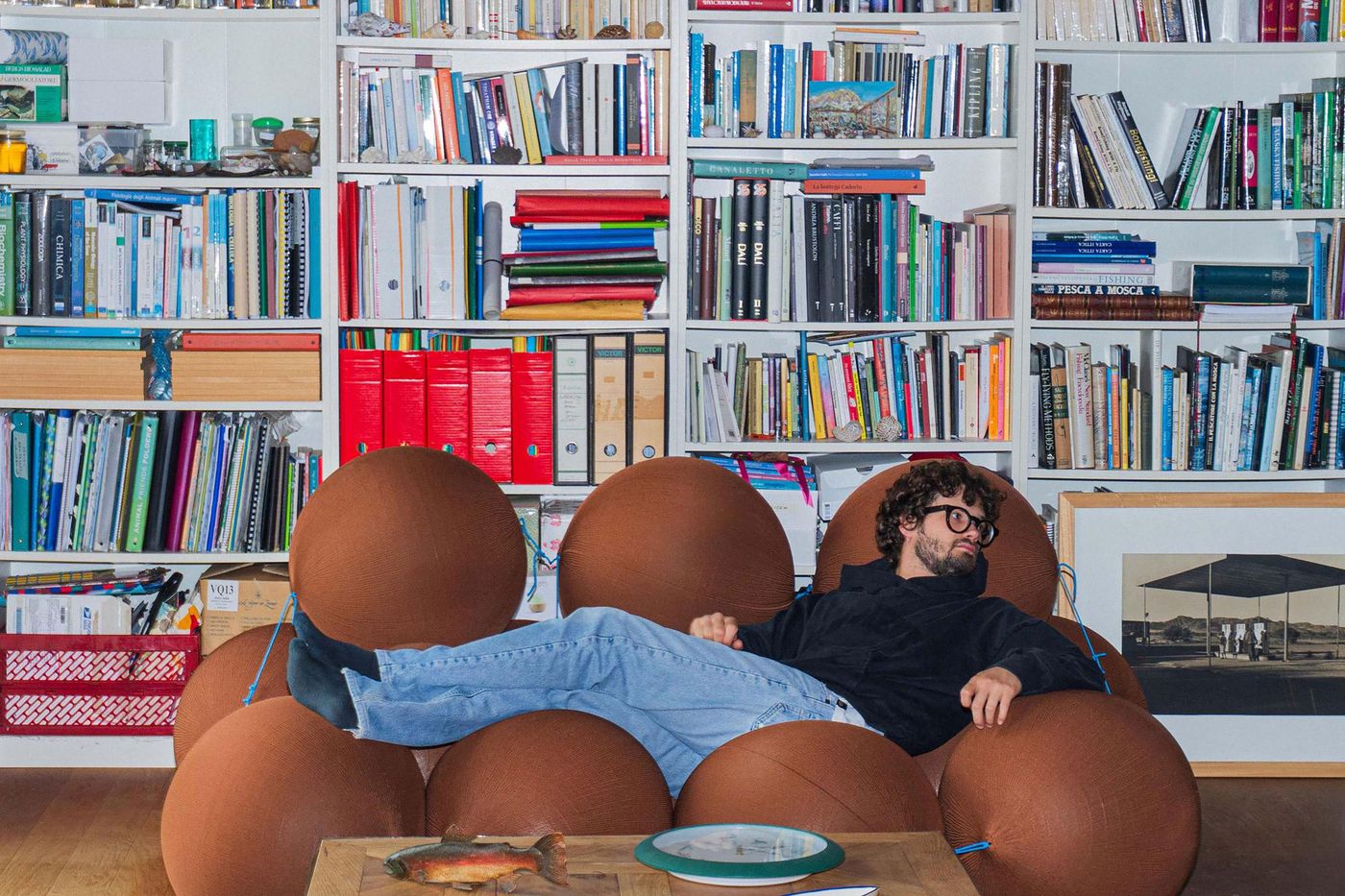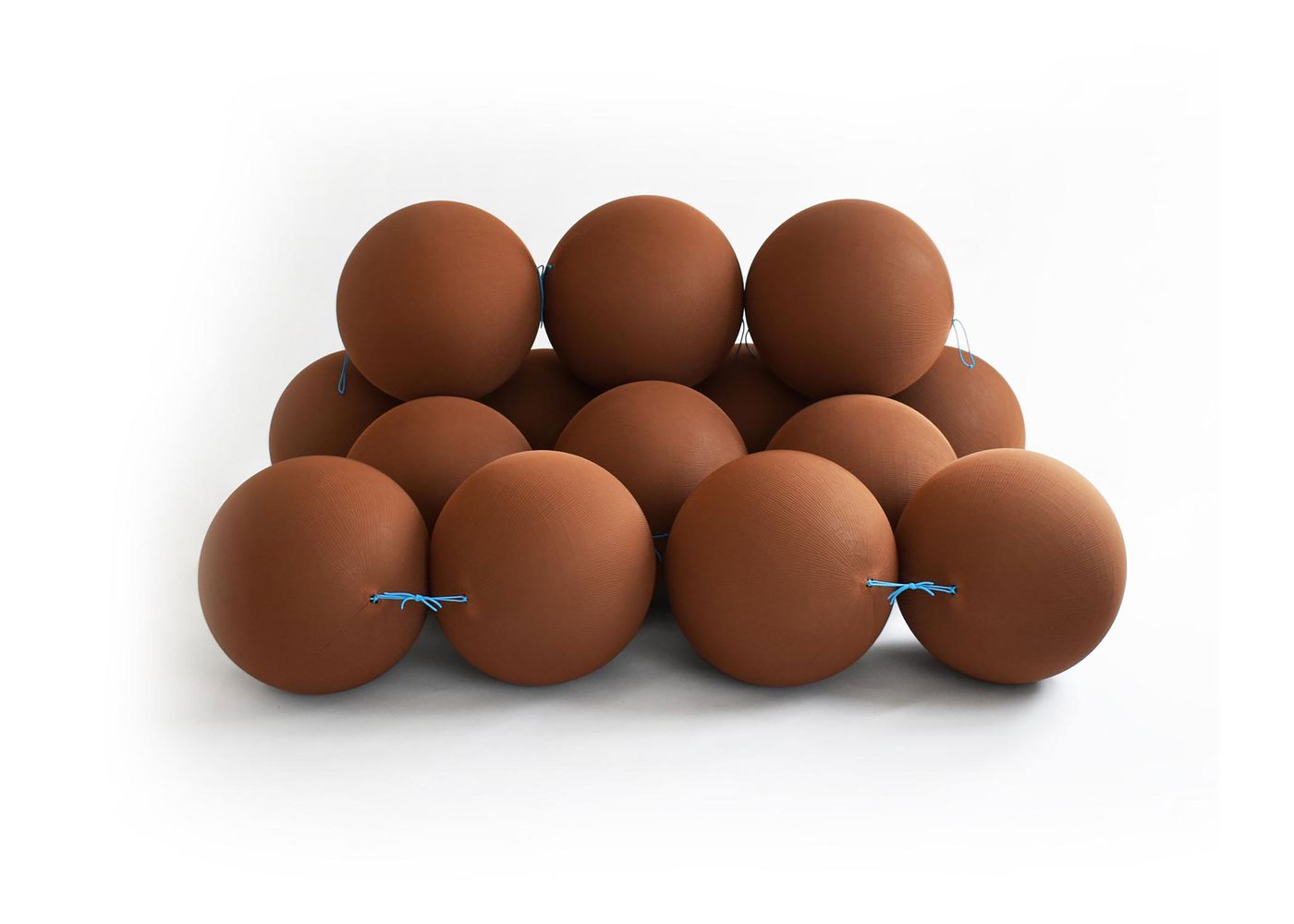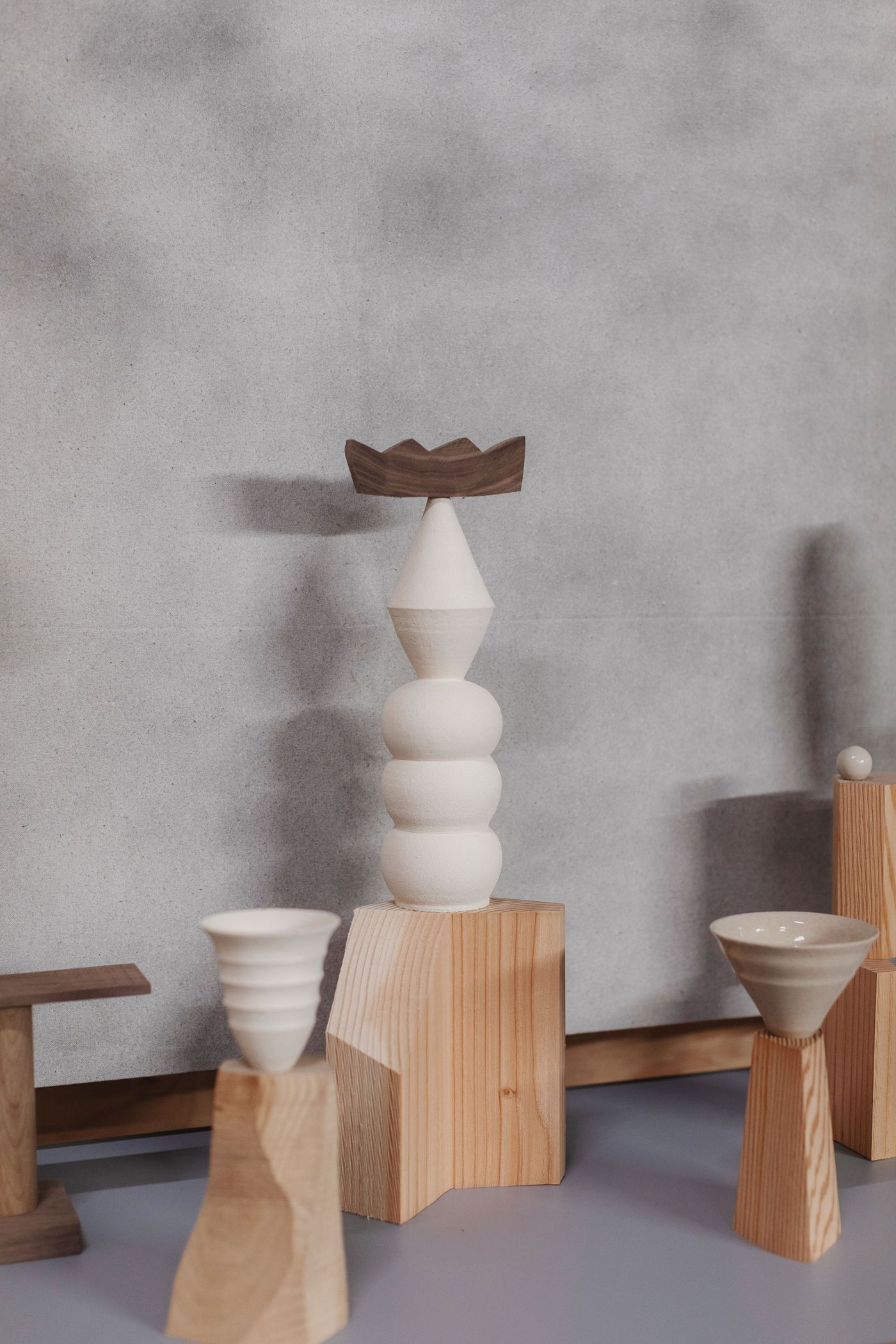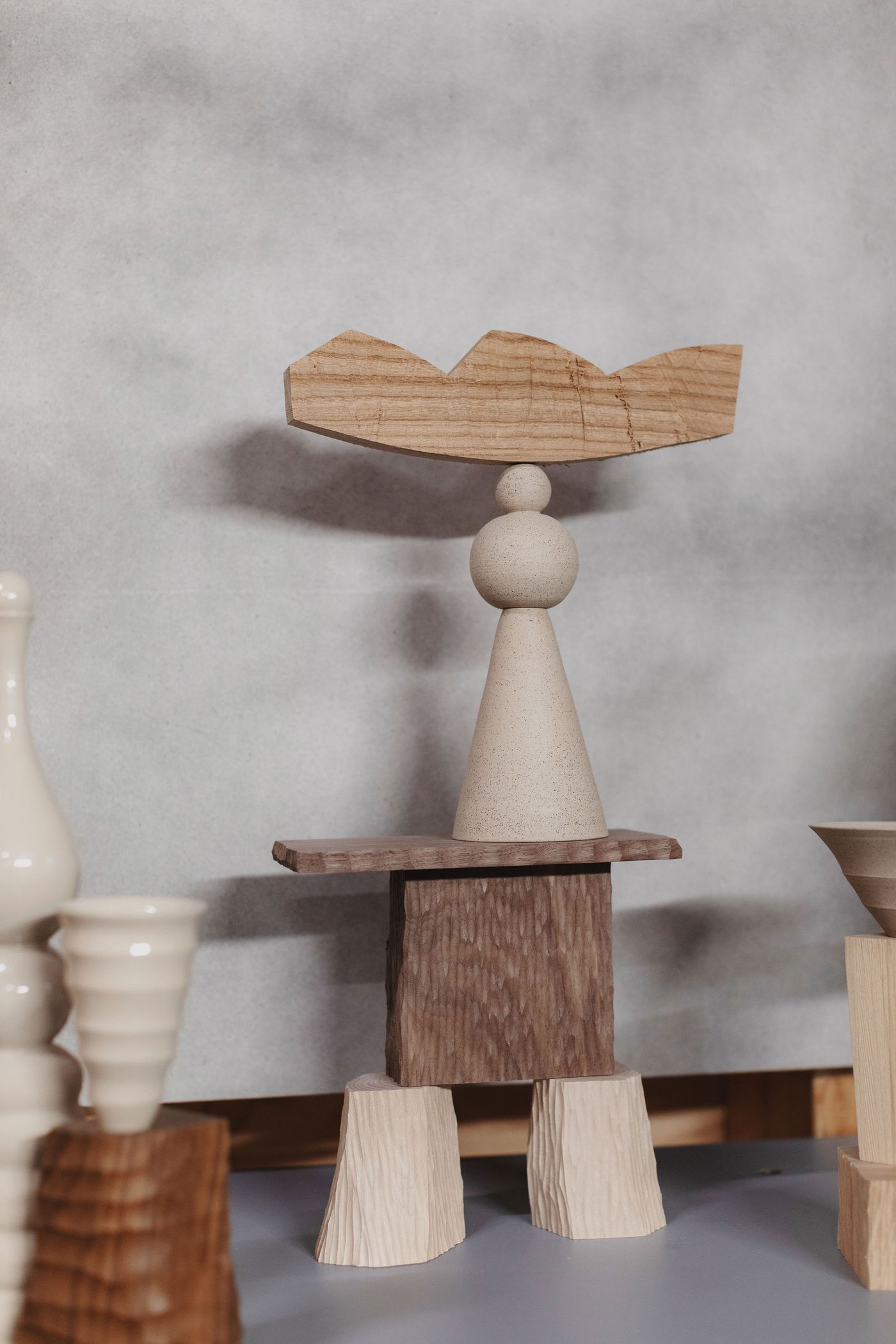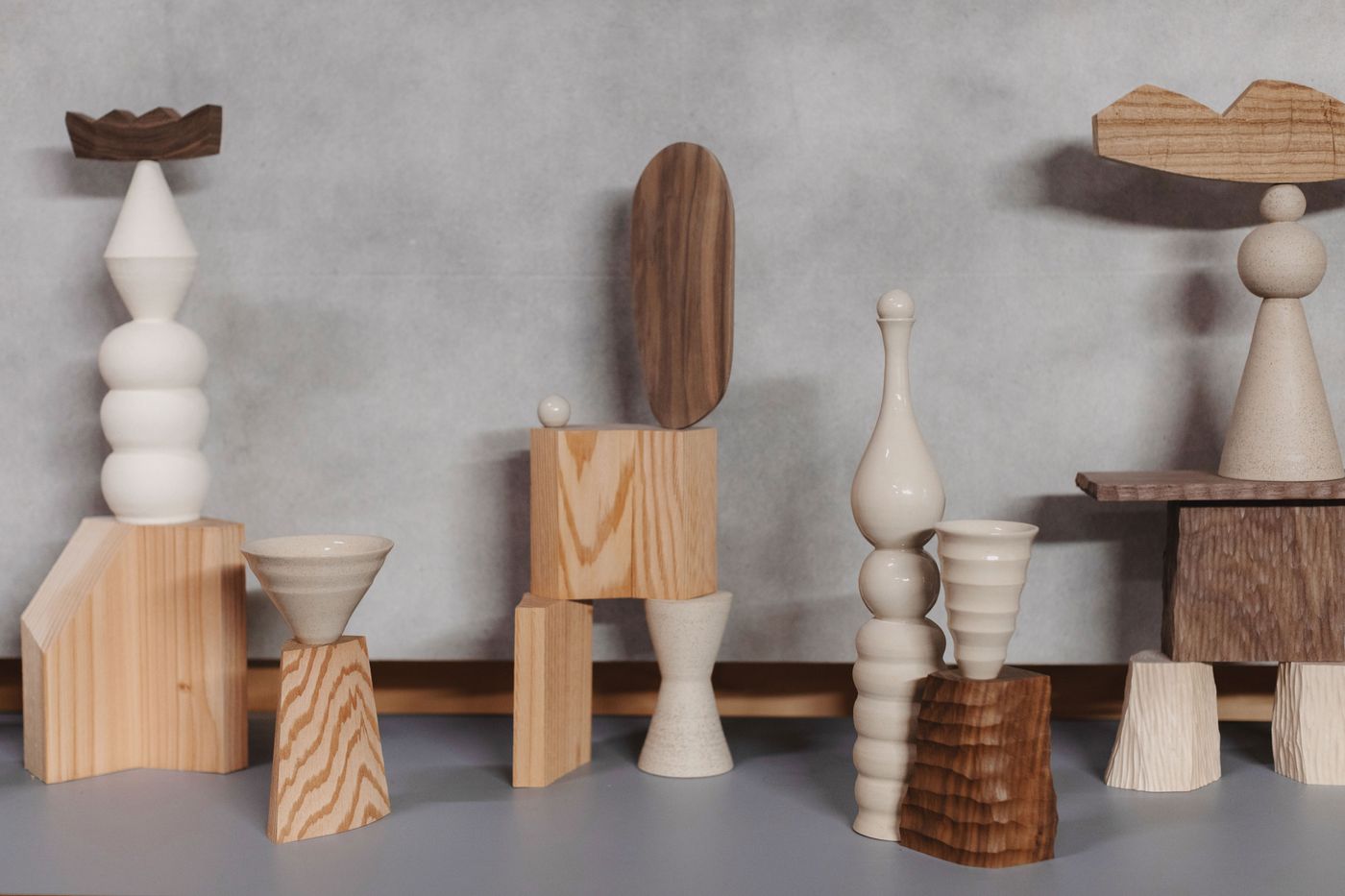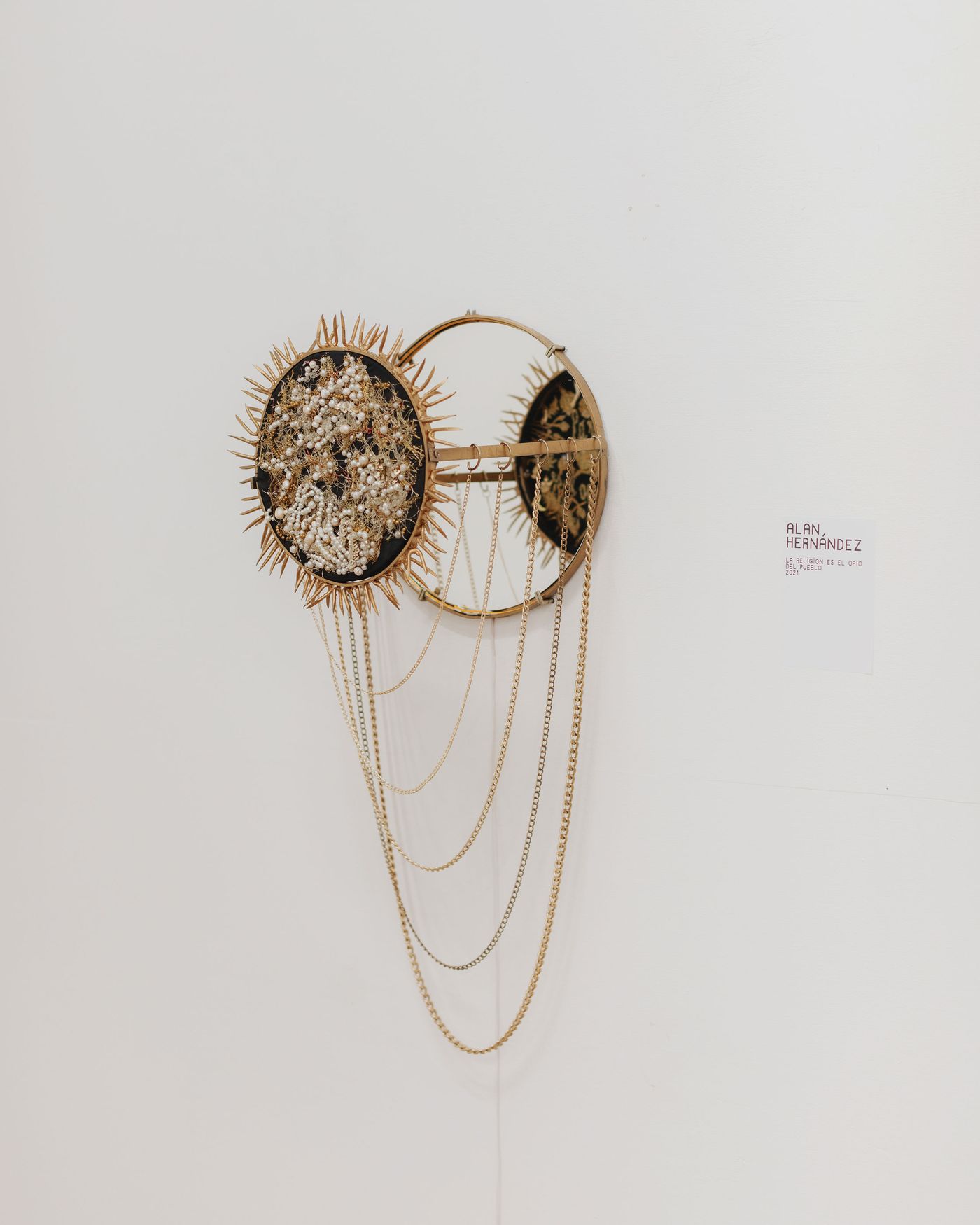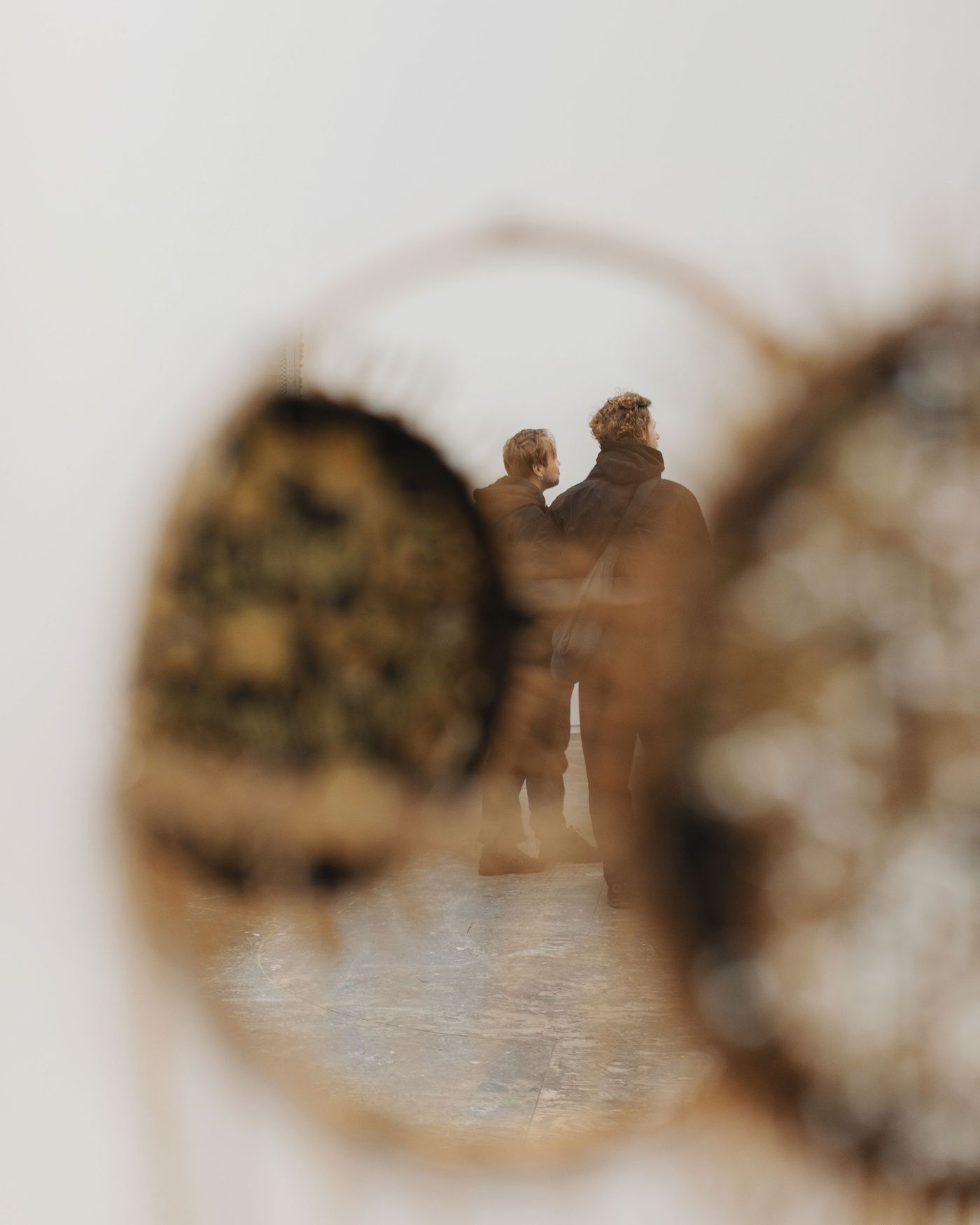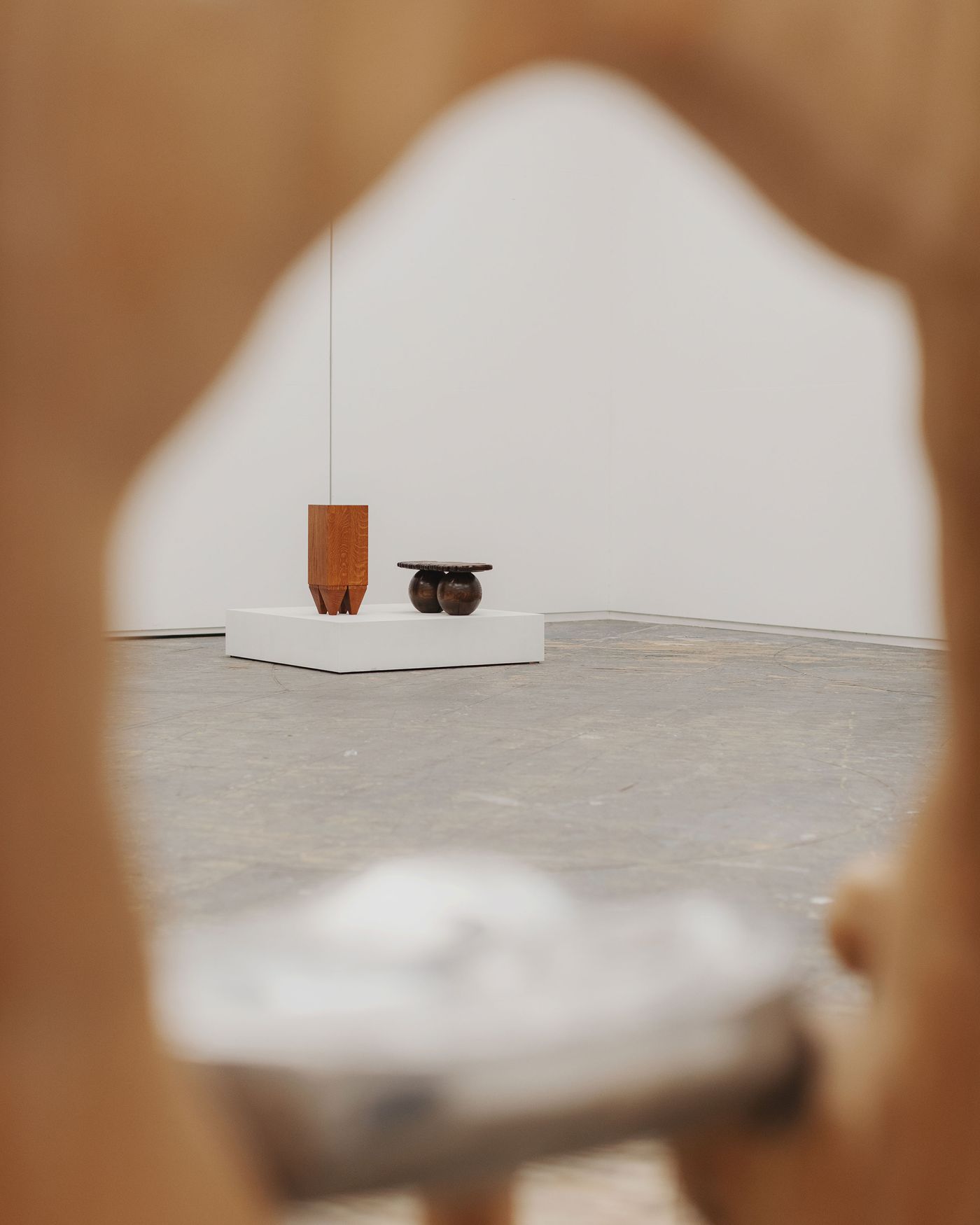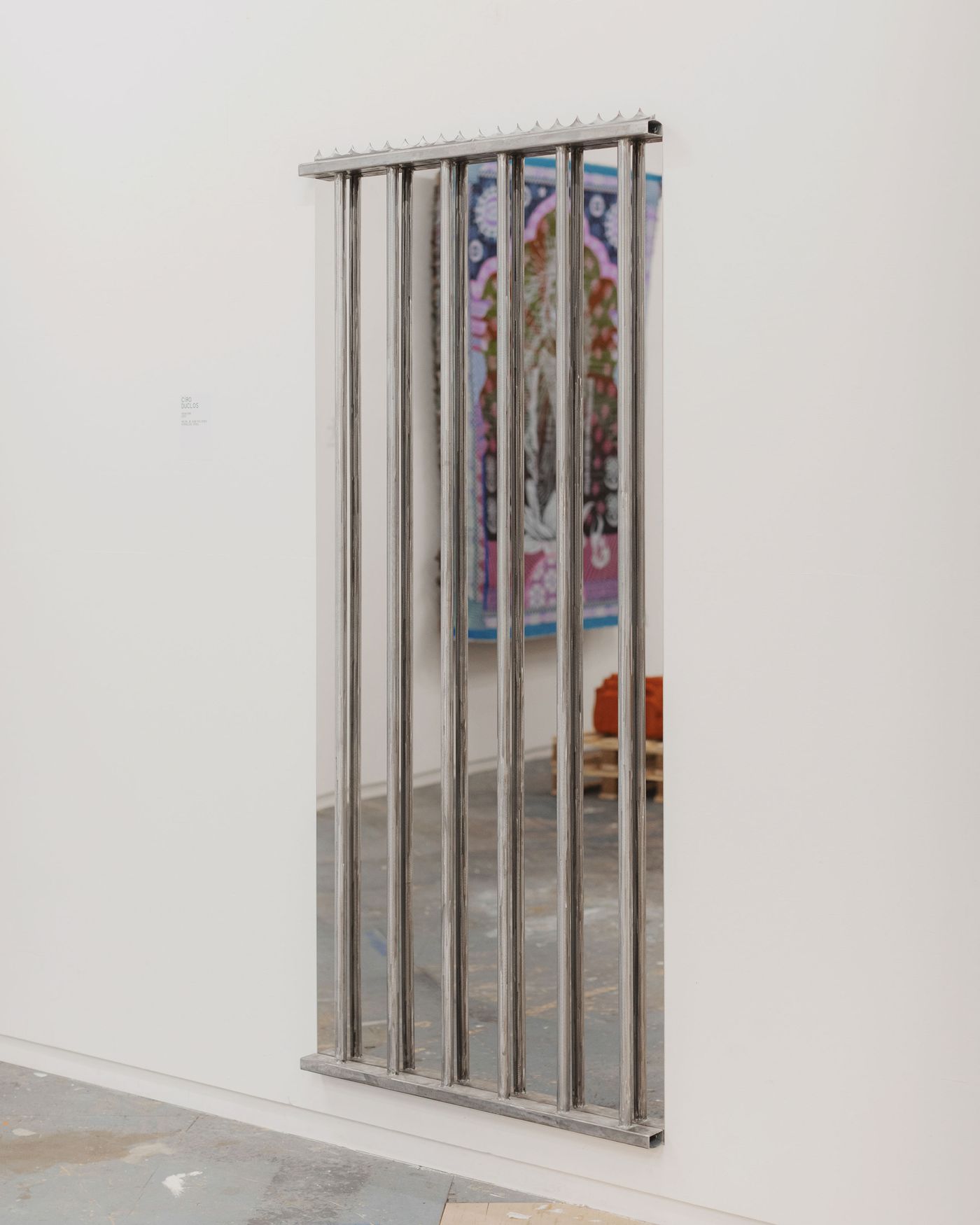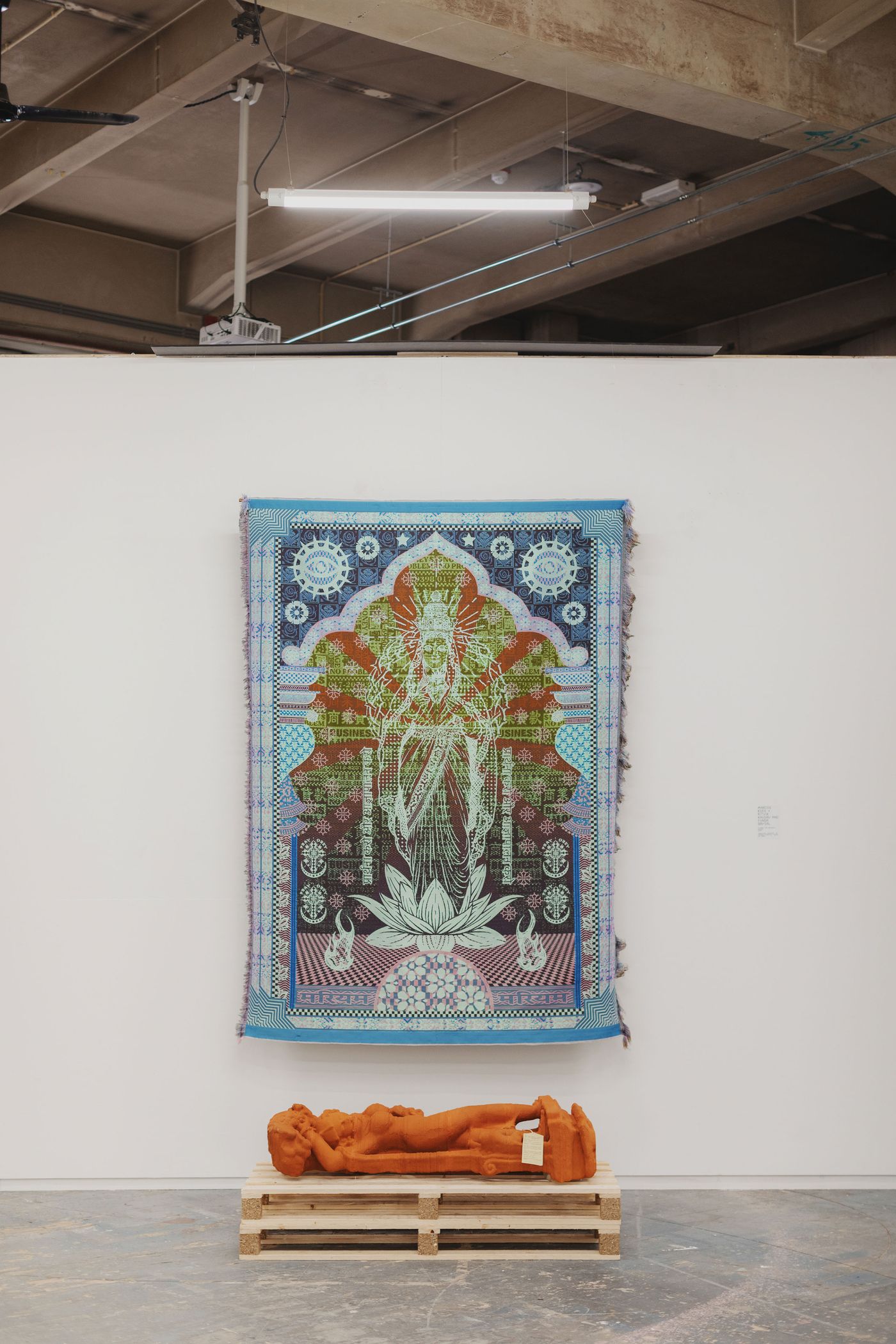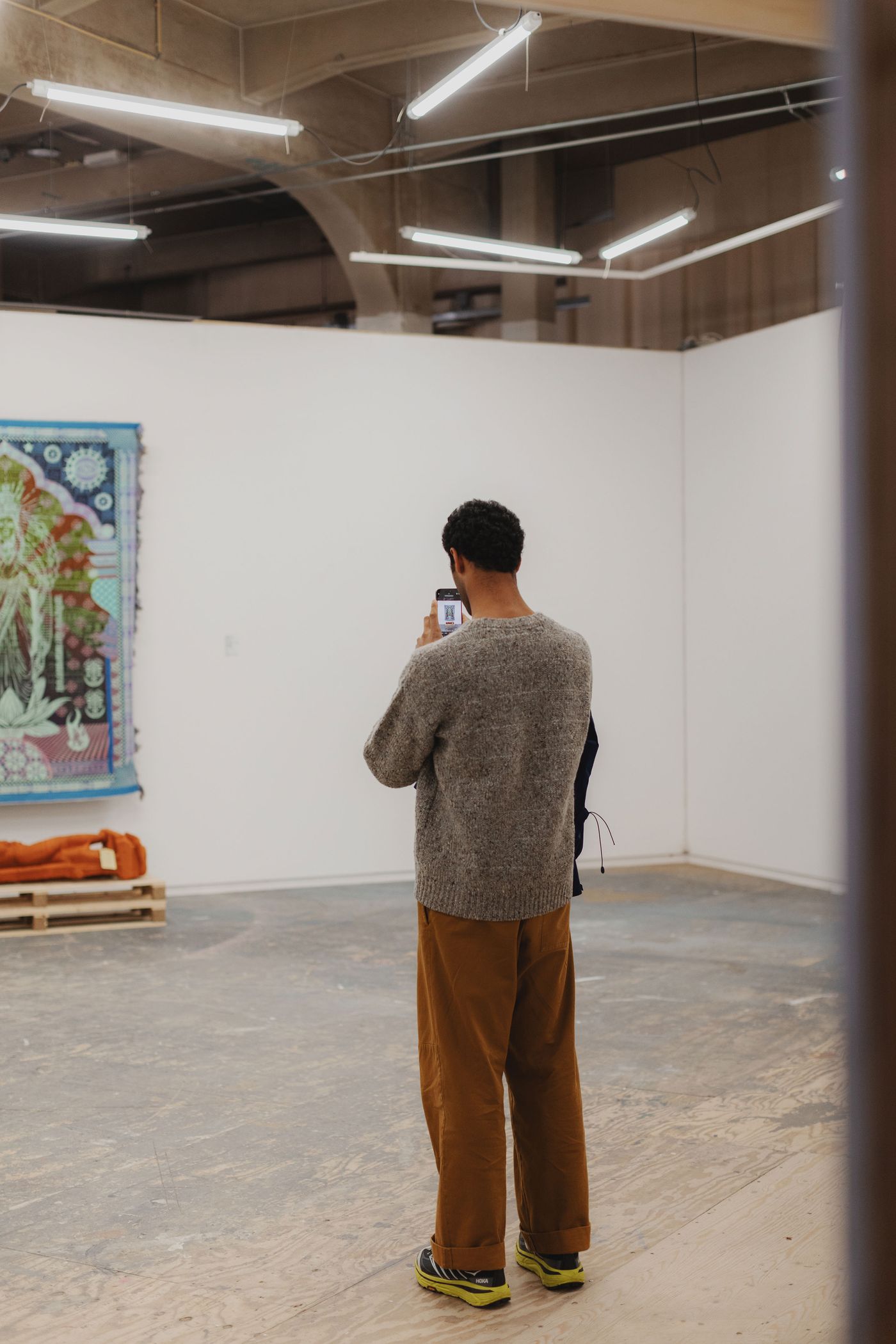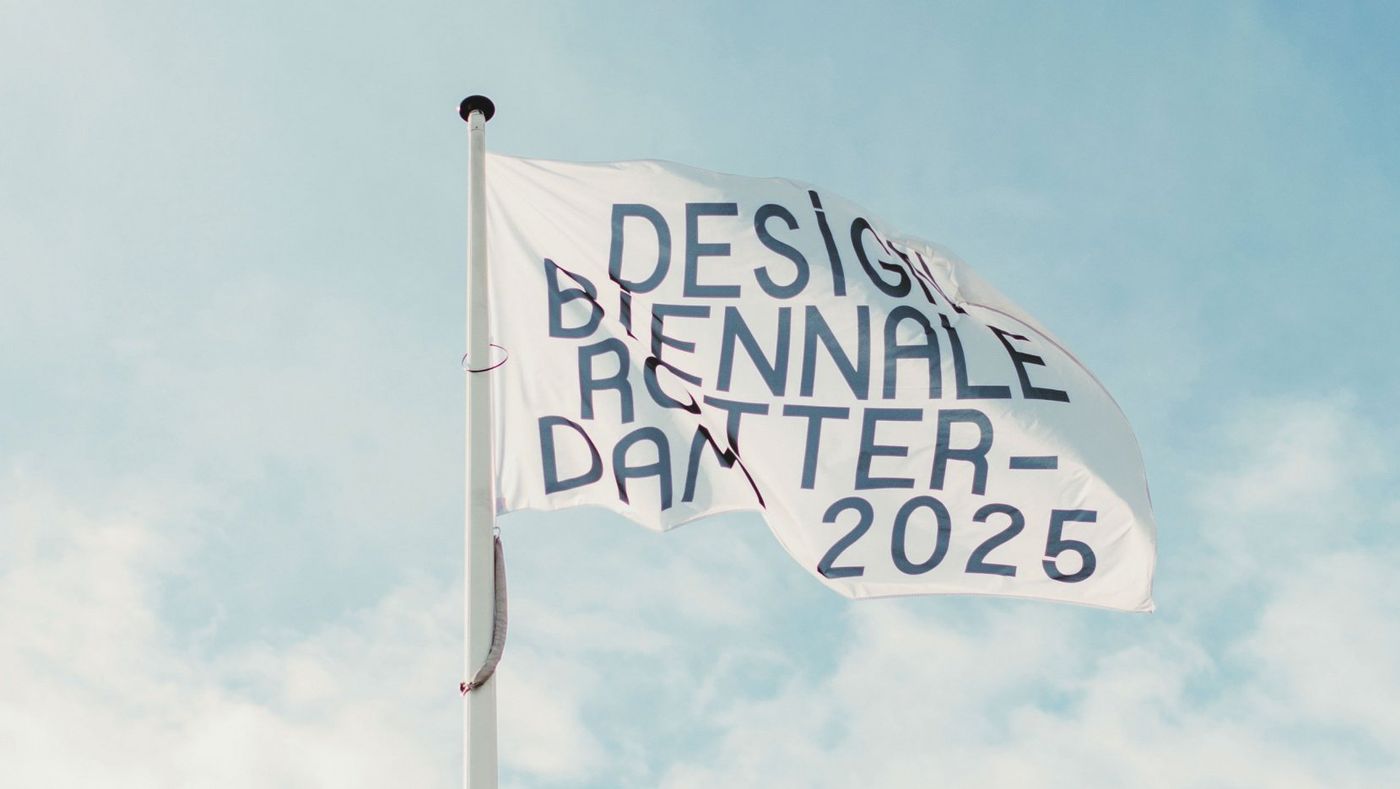
First-Ever Design Biennale Rotterdam Celebrates the City’s Vibrant Design Scene
Words by Paola Carimati
Location
Rotterdam, Netherlands
First-Ever Design Biennale Rotterdam Celebrates the City’s Vibrant Design Scene
Words by Paola Carimati
Rotterdam, Netherlands
Rotterdam, Netherlands
Location
What’s real is unfamiliar: Why it makes sense to talk about an experimental project in its first edition with a community of 200 talented creatives.
Cultural hybridity, sustainability, and design as a tool for shaping the future—these are the driving forces behind the inaugural edition of Design Biennale Rotterdam, as envisioned by curators Liv Vaisberg and Sarah Schulten. Rooted in the city's industrial past, the festival’s objective is to bridge Rotterdam’s heritage with the evolving landscape of art and design.
Unlike Rotterdam’s world-famous architectural practices OMA, MVRD, and KAAN—whose bold visions have defined the city's skyline—the fact that city’s design scene remains surprisingly underexposed formed the basis for the biannual event’s conception. As its curators explain: “Rotterdam is a city of creators, where a large number of designers produce diverse but rarely showcased work,” adding their desire “to unite this community while also connecting it to a wider international network.”
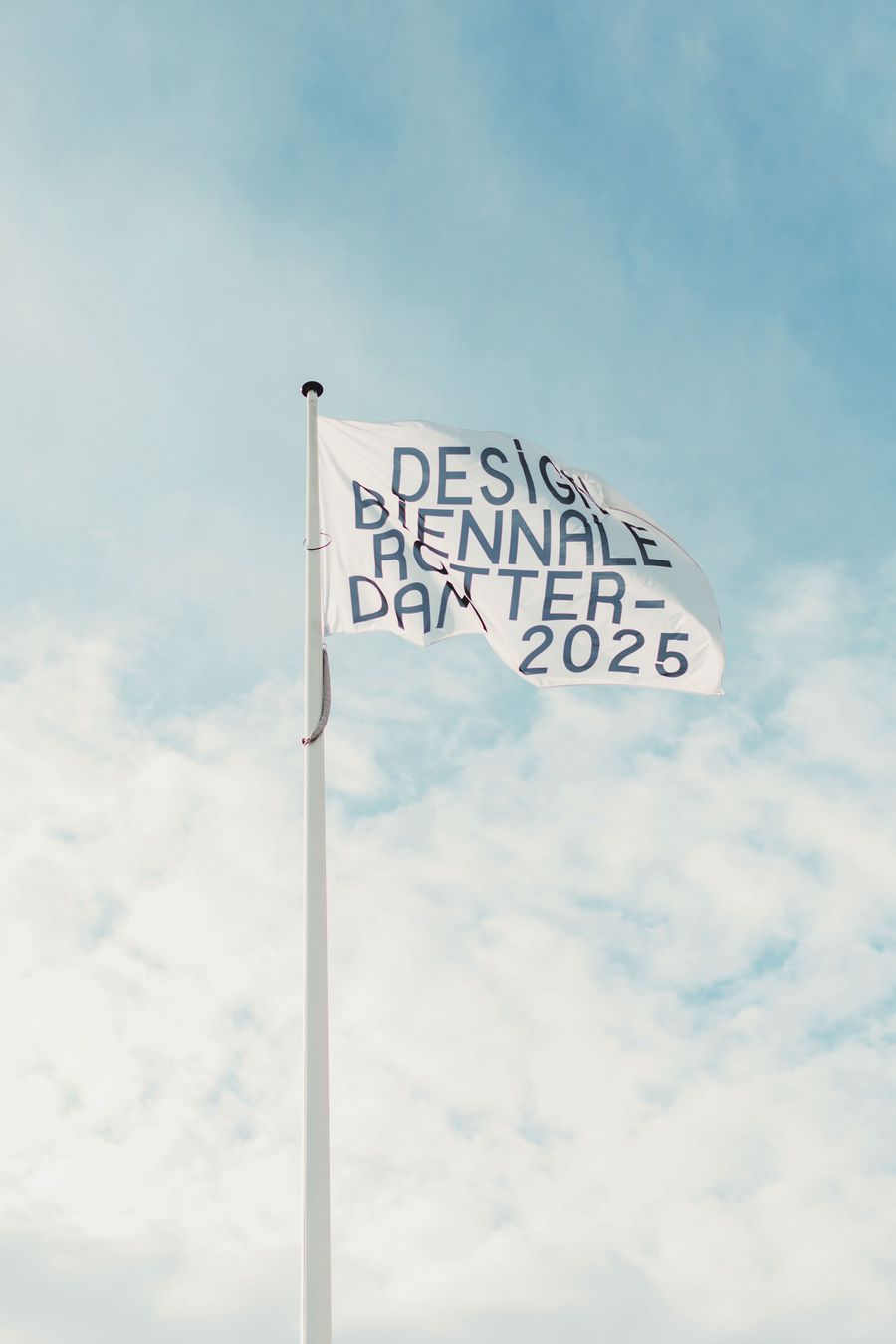
© Design Biennale Rotterdam.

Portrait of Liv Vaisberg and Sarah Schulten, curators of Design Biennale Rotterdam 2025. Photography by Michèle Margot.
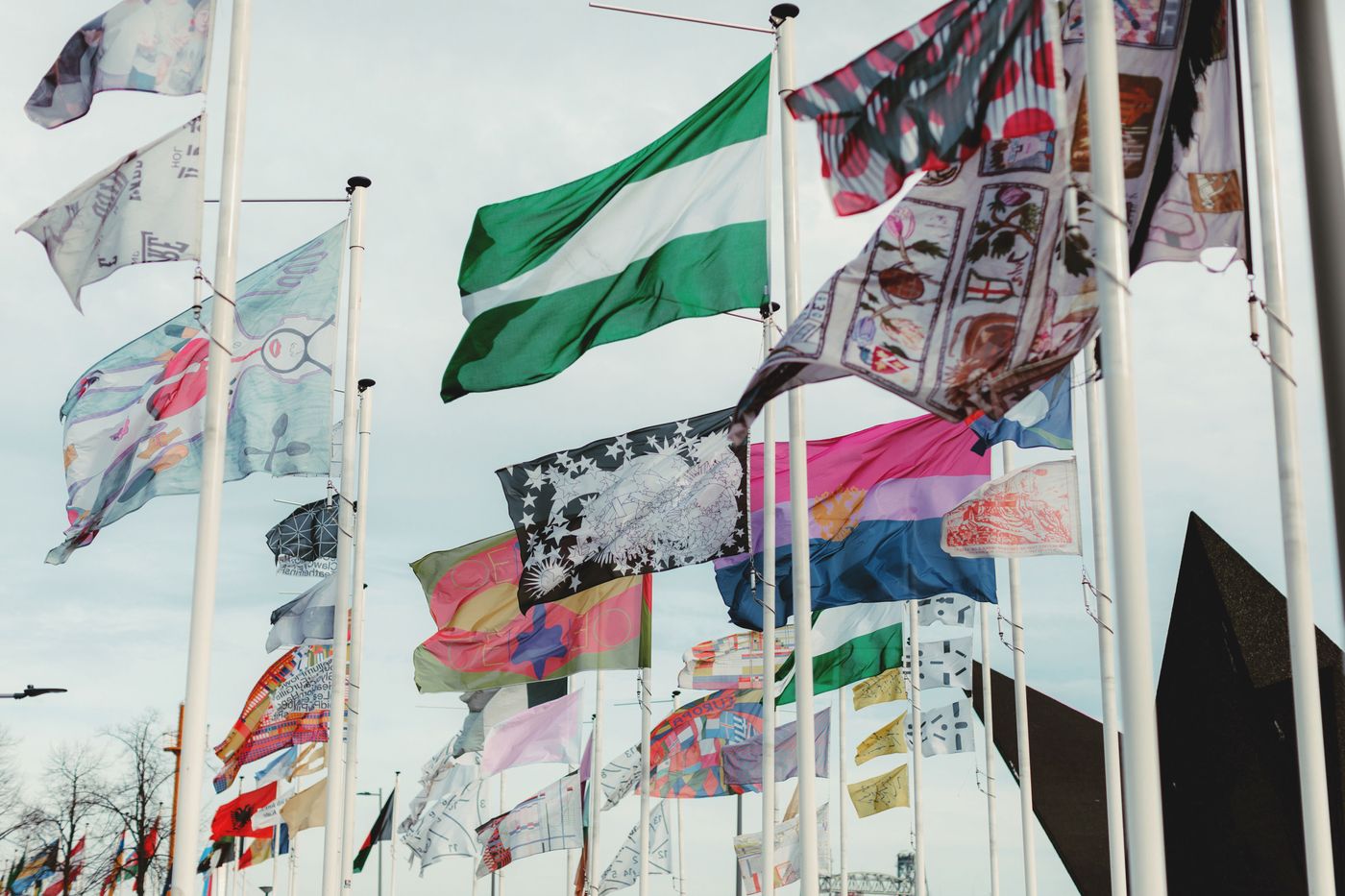
Over 30 international artists have collaborated with the Belgian transdisciplinary platform 019 to create unique flags, all of which were displayed together at the Vlaggenparade. © Design Biennale Rotterdam.
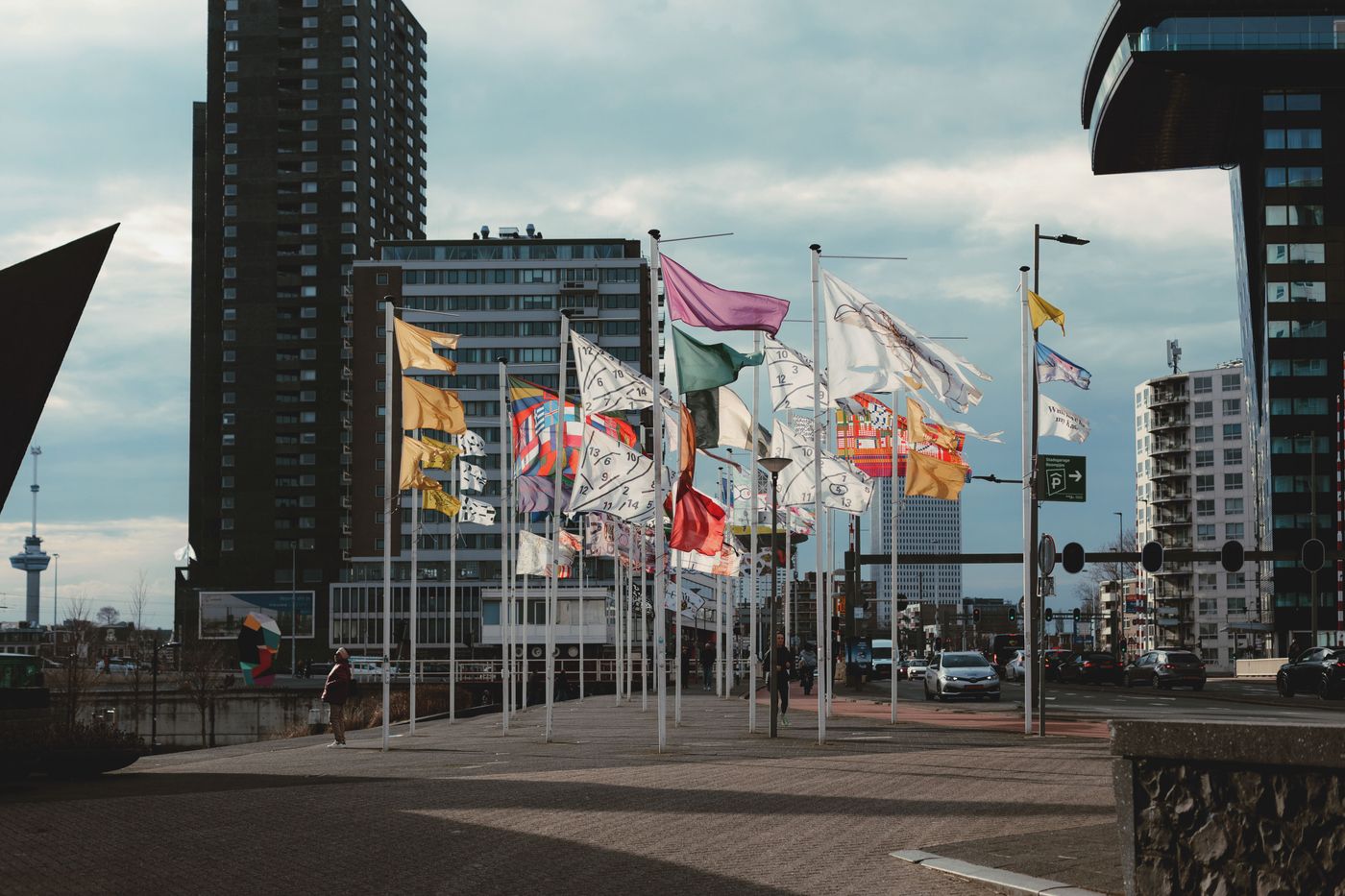
Over 30 international artists have collaborated with the Belgian transdisciplinary platform 019 to create unique flags, all of which were displayed together at the Vlaggenparade. © Design Biennale Rotterdam.
Under the theme “What’s real is unfamiliar”, the inaugural event (20 February – 2 March, 2025) brought together over 200 designers of all ages and nationalities, graduates and students of Design Academy Eindhoven (DAE) and the Willem de Kooning Academie (WDKA). For these creatives, their education was more than just a stepping stone—it was the reason they decided to not return to their home countries after graduating, choosing instead to stay in Rotterdam or move there from Eindhoven. Amidst a mix of emerging names and established figures, the festival’s format demonstrated how a rapidly growing city can still stay attuned to the creative movements bubbling at its foundations. In Northern Europe, the value of collaboration is immediately evident in Rotterdam’s design community which embodies this ethos. As a testament to this dynamic ecosystem, shortly afterwards, some twenty design Rotterdam-based studios temporarily migrated to Brussels for Collectible, the city’s international fair dedicated to contemporary collectible design.
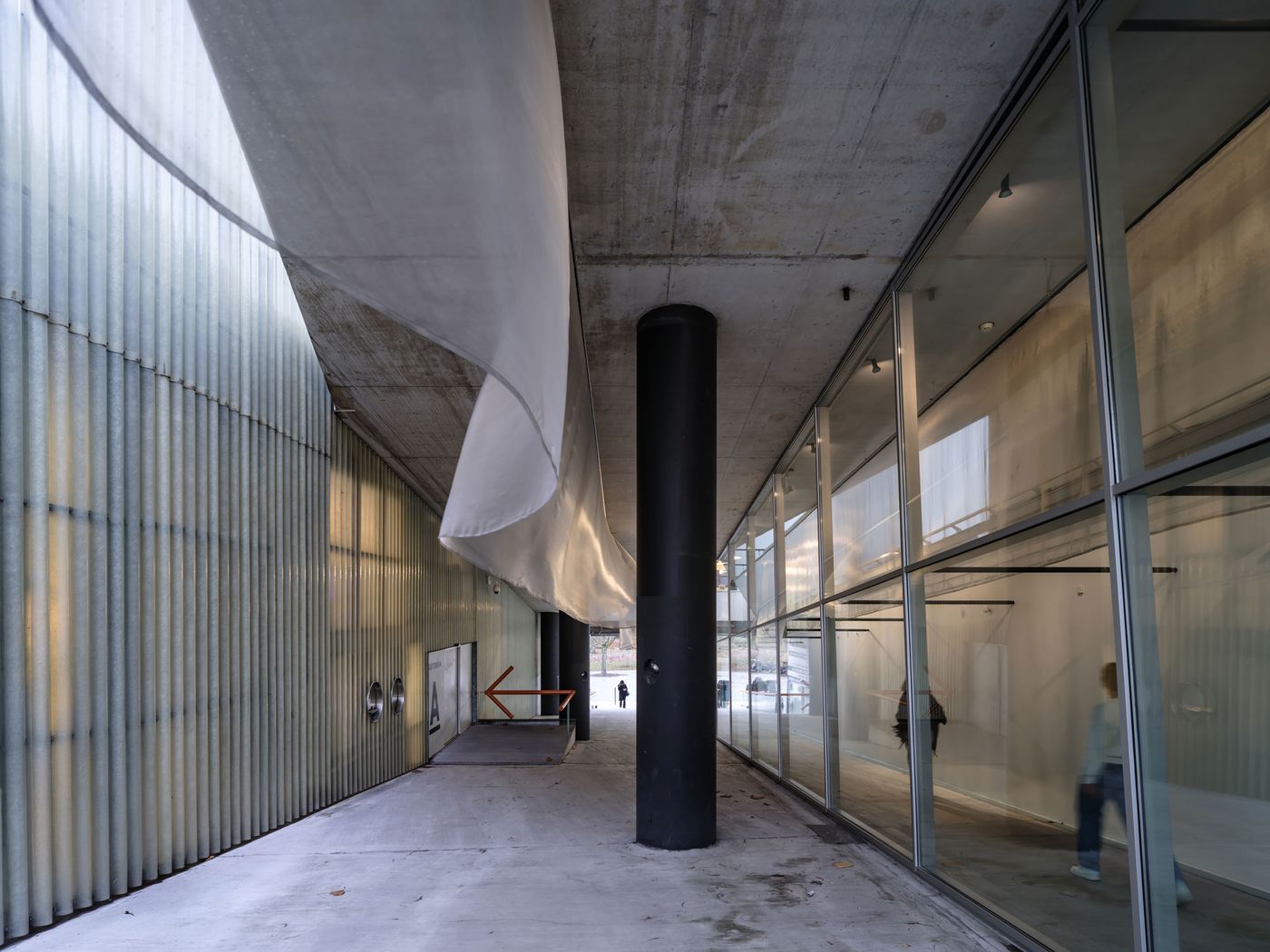
Audiovisual artist and composer Boris Acket presented "Spaces Between Lines", a new site-specific intervention at the Kunsthal. © Ossip.
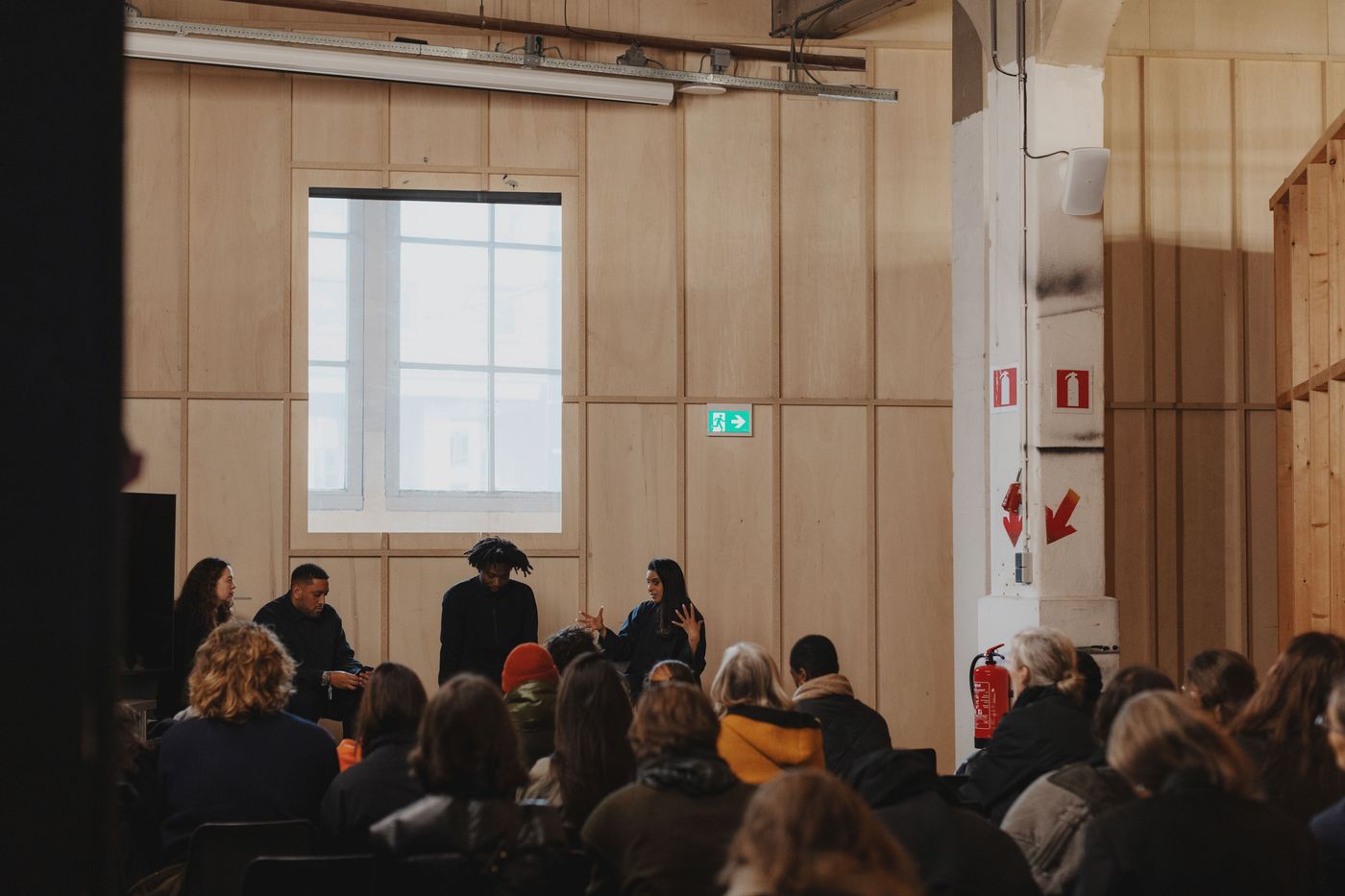
Huidenclub. Symposium. Photography by Michèle Margot.
The Biennale itself unfolded across several iconic locations, including Groot Handelsgebouw, one of the first major buildings built after the bombing of Rotterdam in the Second World War, which hosted several shows and events. Standout names among these: Austrian designer Laurids Gallée, who unveiled a new series of sculptural lights made out of resin in collaboration with The Collectional in his solo show Cairns; Lisa Brustolin, an Italian designer participating in This Is Us group exhibition with her In Transition bookshelf, an exploration of material transparency; and Antwerp-based Marc Meeuwissen, who presented at the Show Not Show group exhibition his BRUTALISTA 03C chair and MAKE AND BREAK book tables, the former made from industrially lacquered plywood, the latter from cement-bonded fibreboard, both from his Dear Objects collection. At the same venue, Fundamental Eatery, a hybrid restaurant-gallery furnished with works by Maarten Baas offered a synthesis of design and dining.
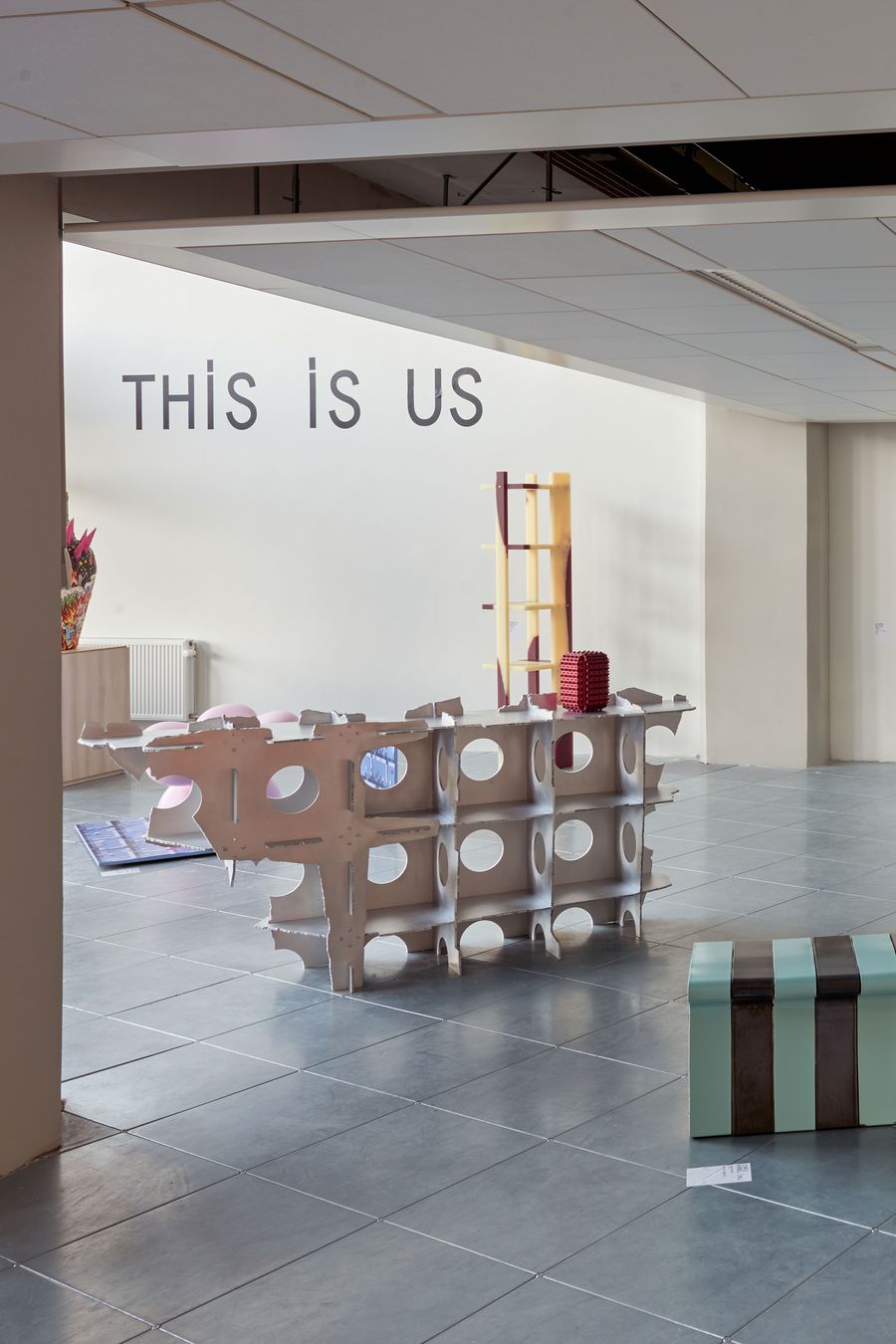
Exhibition view, "This Is Us" at Groot Handelsgebouw.

Laurids Gallée. Exhibition view, "Cairns" at Groot Handelsgebouw. Photograph by Pierre Castignola.

Laurids Gallée. Exhibition view, "Cairns" at Groot Handelsgebouw. Photograph by Pierre Castignola.
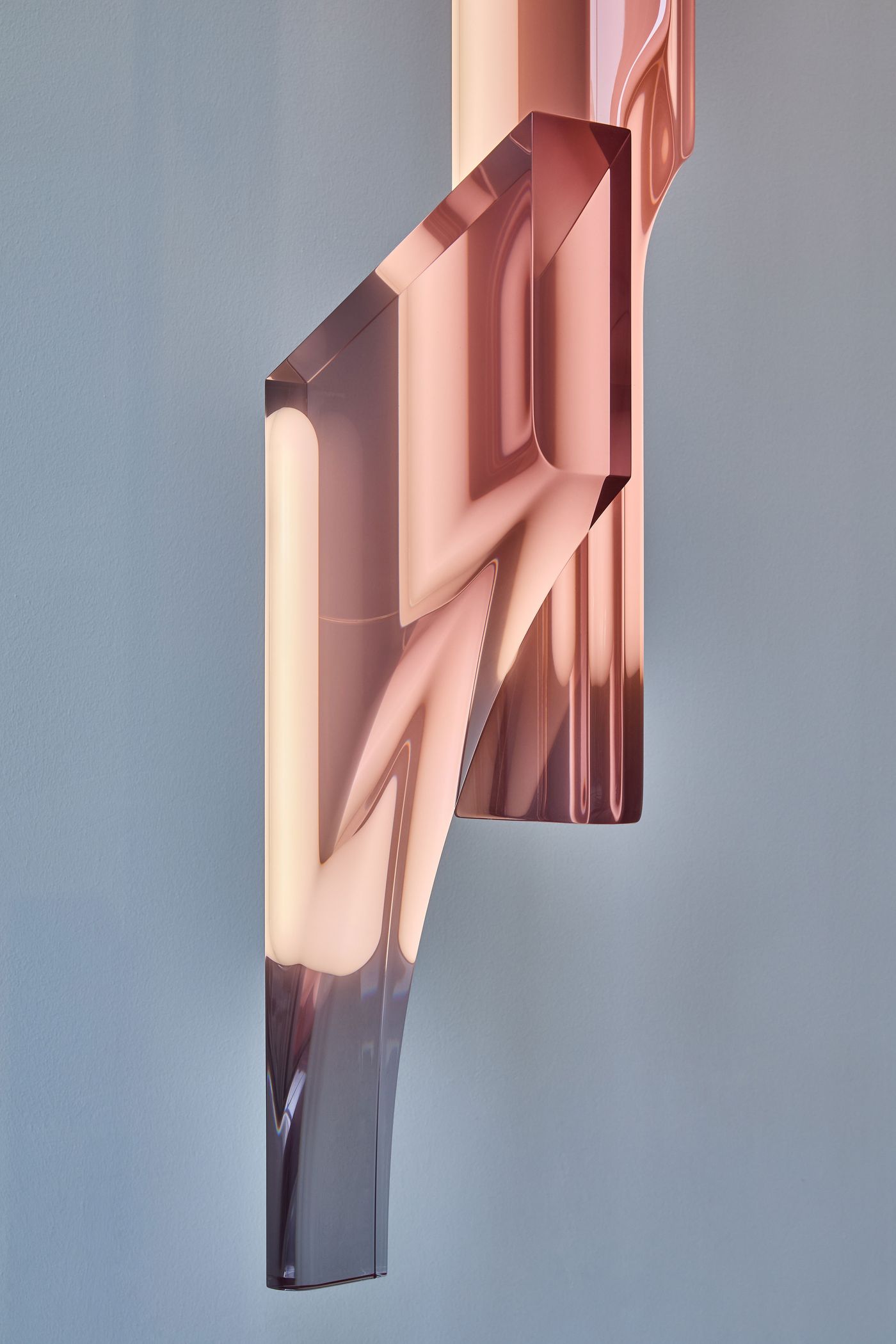
Laurids Gallée, Untitled (detail), 2025. Resin, aluminium, LED, transformer plus housing. 330 x 55 x 59 cm. Photography by Mathijs Labadie.
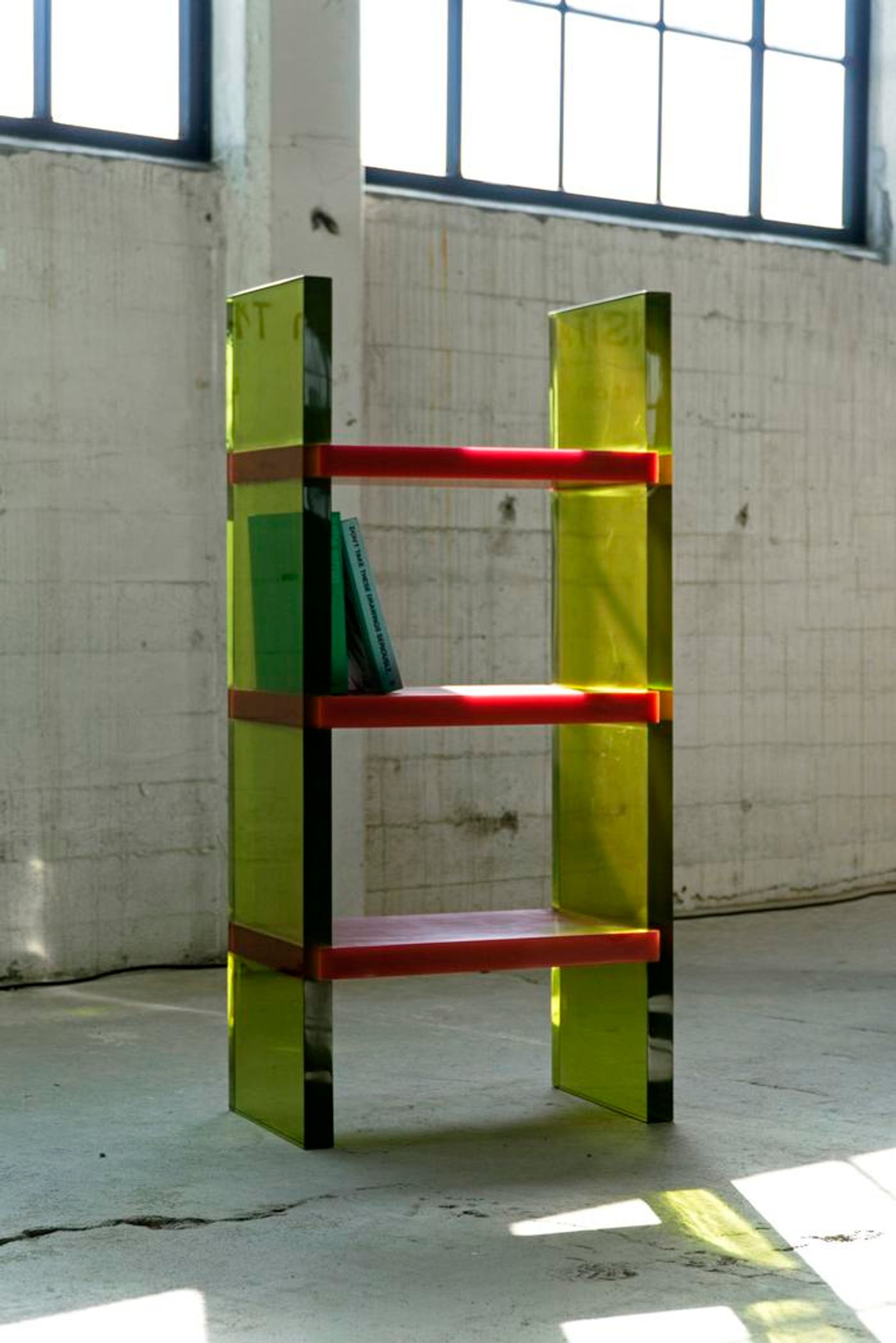
Lisa Brustolin, Differ Shelf from the “In Transition” collection. Epoxy Resin. H134 x W64 x D36 cm. Photography by Giuliano Lupi.

Fundamental Eatery at Groot Handelsgebouw. Photography by Show Not Show.
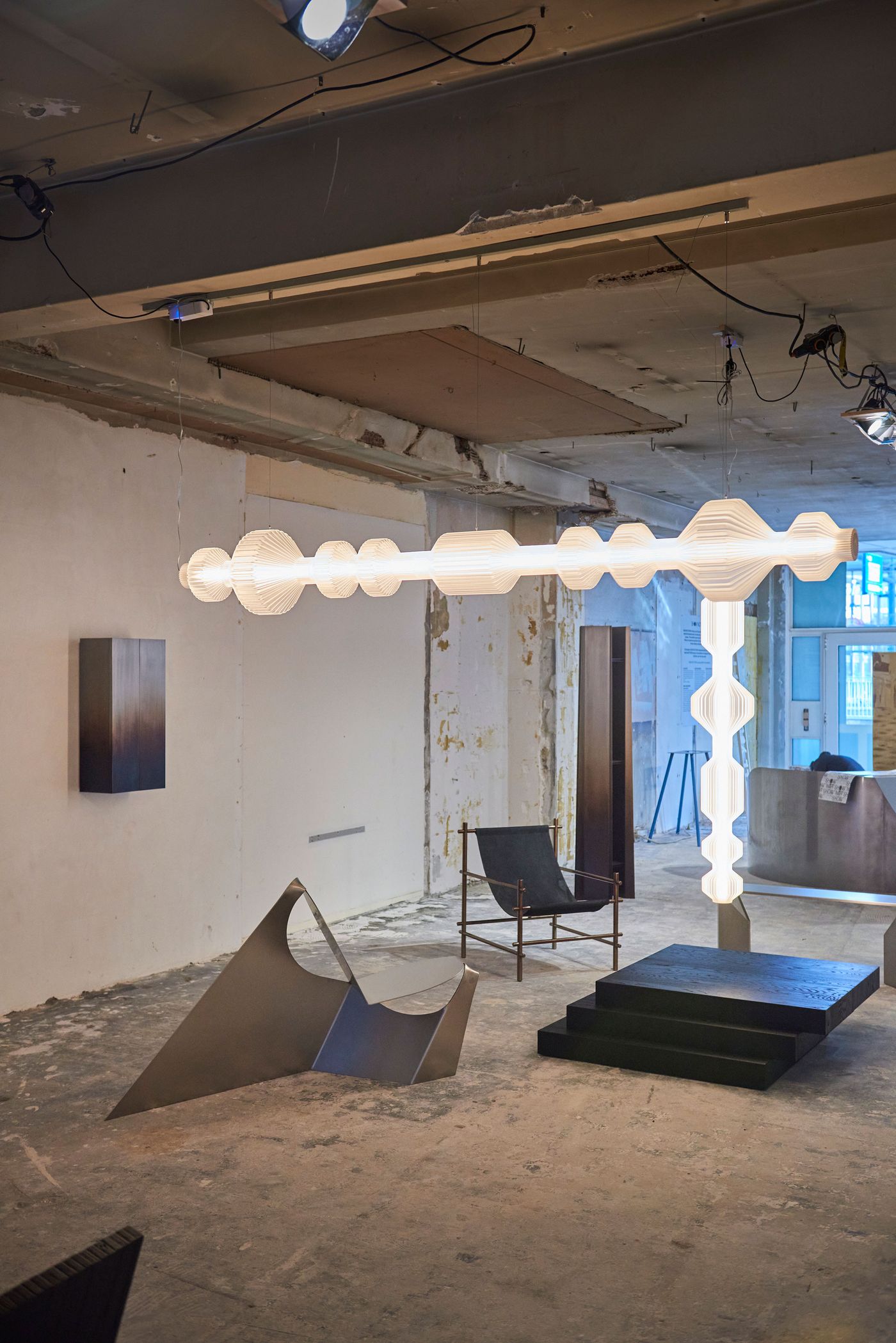
Exhibition view, "Show Not Show" at Groot Handelsgebouw. Photography by Show Not Show.
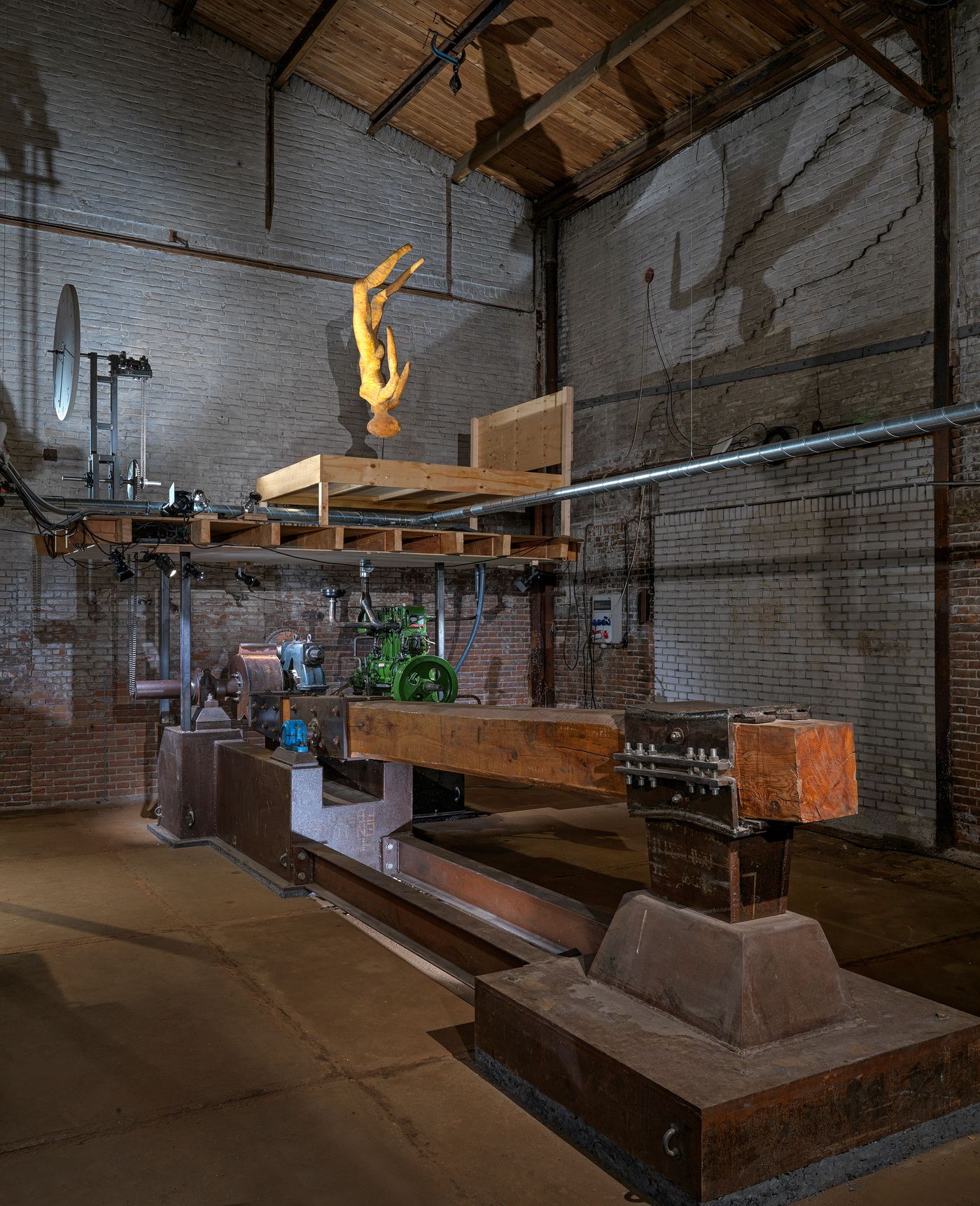
Installation view, "Disco Inferno" by Atelier van Lieshout at Brutus. Photography by Gert Jan van Rooij.
The Biennale also engaged with surrealist influences, as seen in Disco Inferno, an immersive installation by Atelier Van Lieshout (AVL) where sculpture, architecture, and functional objects coexist in a chaotic yet mesmerizing environment. Presented at Brutus, an experimental space founded by artist and AVL founder Joep Van Lieshout, the installation is a labyrinth of countless giant, handmade machines, hybrid engines, sculpures and furniture, set in ever-ending motion. Conceived as an ongoing project, "it will continue for years, decades—maybe even centuries", Van Lieshout says. "As long as we have oil or plastic waste, we can keep dancing on the edge of the volcano.”
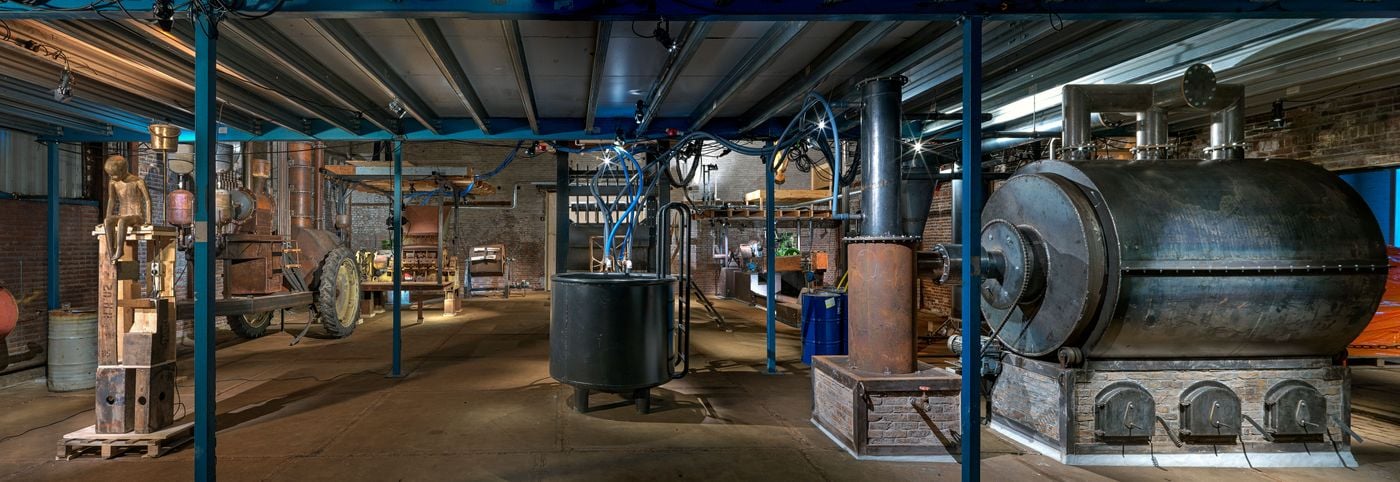
Installation view, "Disco Inferno" by Atelier van Lieshout at Brutus. Photography by Gert Jan van Rooij.

Installation view, "Disco Inferno" by Atelier van Lieshout at Brutus. Photography by Gert Jan van Rooij.

Installation view, "Disco Inferno" by Atelier van Lieshout at Brutus. Photography by Gert Jan van Rooij.
Another key venue was Katoenhuis, a multidisciplinary hub in the heart of Rotterdam Makers District. Originally built in 1950 as a warehouse, it now serves as a laboratory for materiality, technology, and production. Here, German designer Isabella Gros presented Depressed Furniture, an aluminium lighting collection expressing the emotional weight of depression—each piece embodying a different feeling. Gros' collection was part the group show The Right Questions: Rethinking Creation in the Age of Technology which showcased a diverse eange of technology-driven installations interrogating the evolving nature of manufacturing and design.
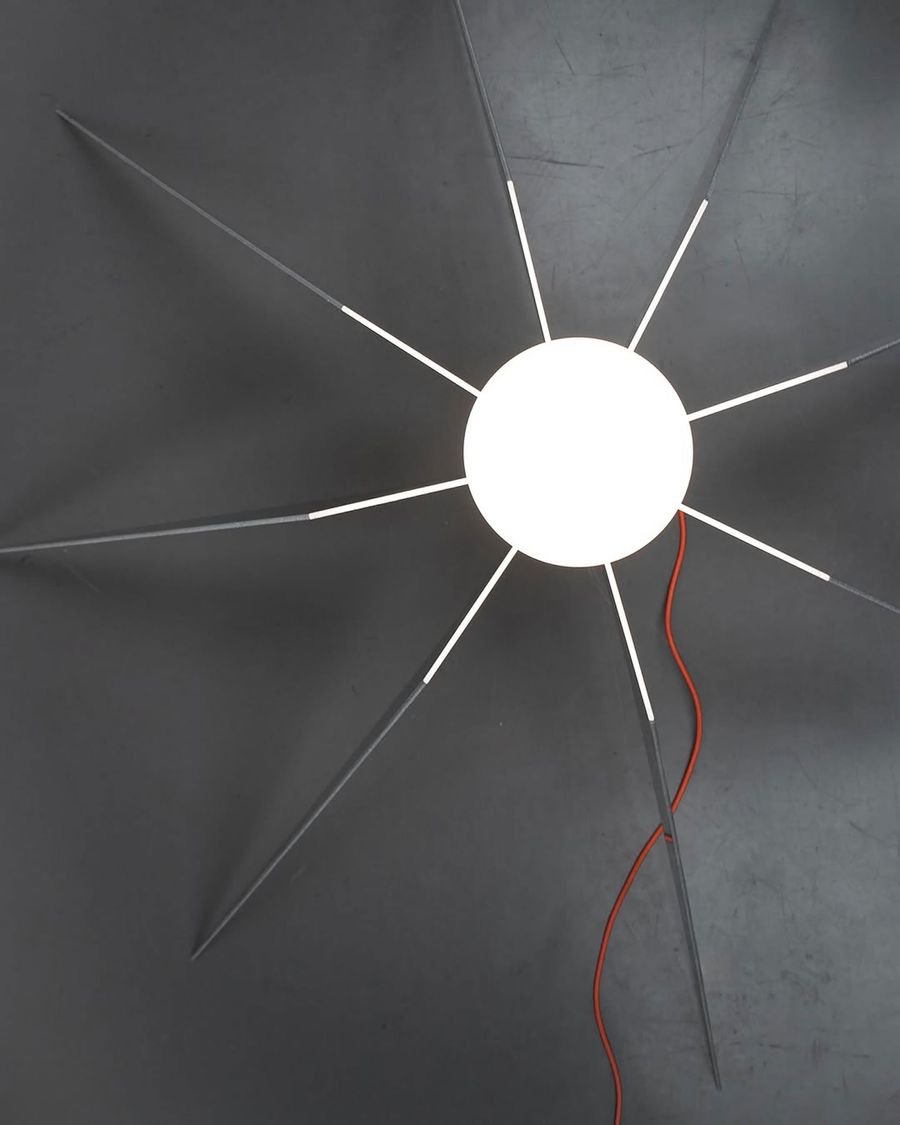
Isabella Gros, "Depressed Furniture" installation of five lamps each representing an emotion that a lot of depressed people can identify with.

Isabella Gros, "Depressed Furniture" installation of five lamps each representing an emotion that a lot of depressed people can identify with.
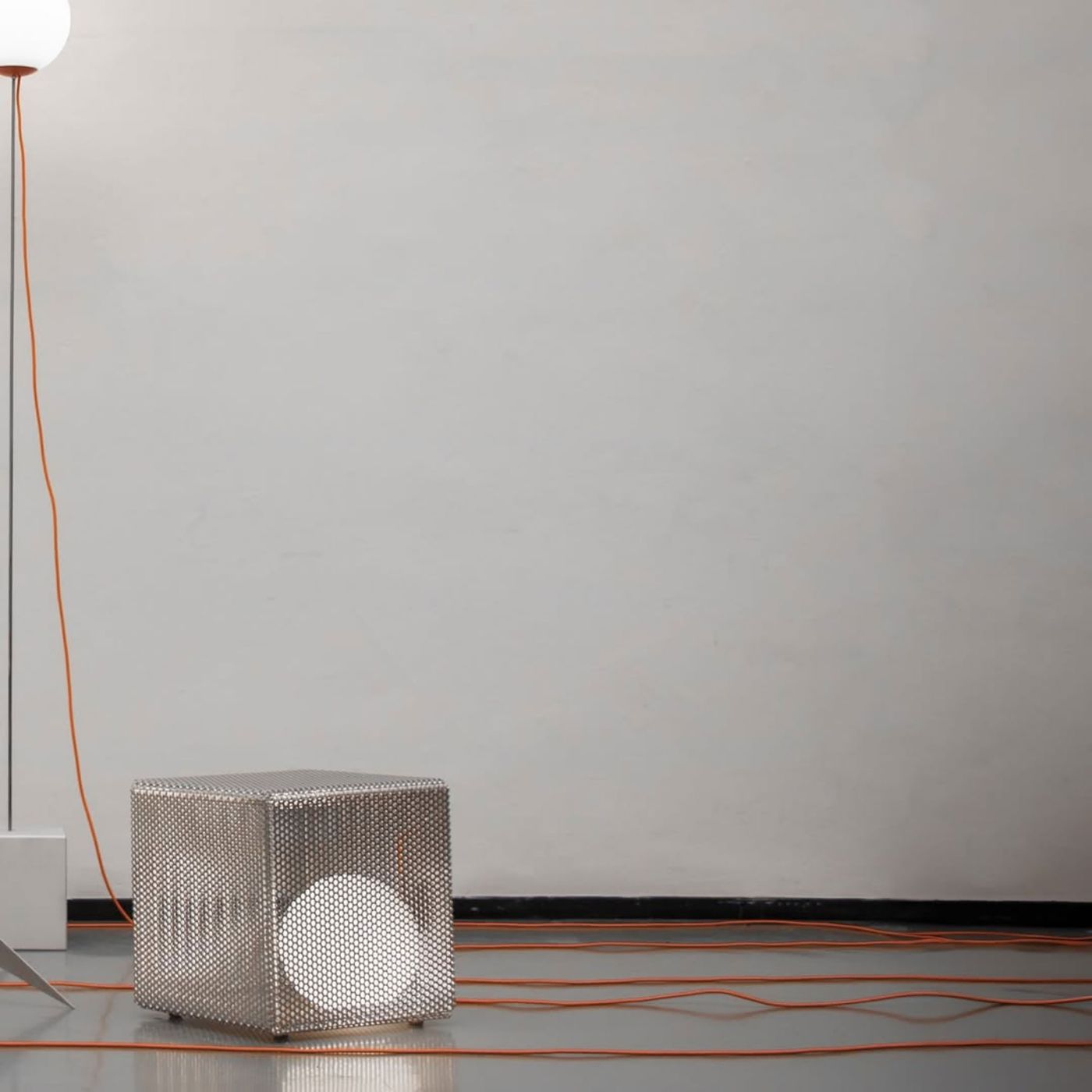
Isabella Gros, "Depressed Furniture" installation of five lamps each representing an emotion that a lot of depressed people can identify with.

Exhibition view, "Exorcise the Candy House", curated by Wumen Ghua, at Katoenhuis. Photography by Michèle Margot.

Exhibition view, "Exorcise the Candy House", curated by Wumen Ghua, at Katoenhuis. Photography by Michèle Margot.
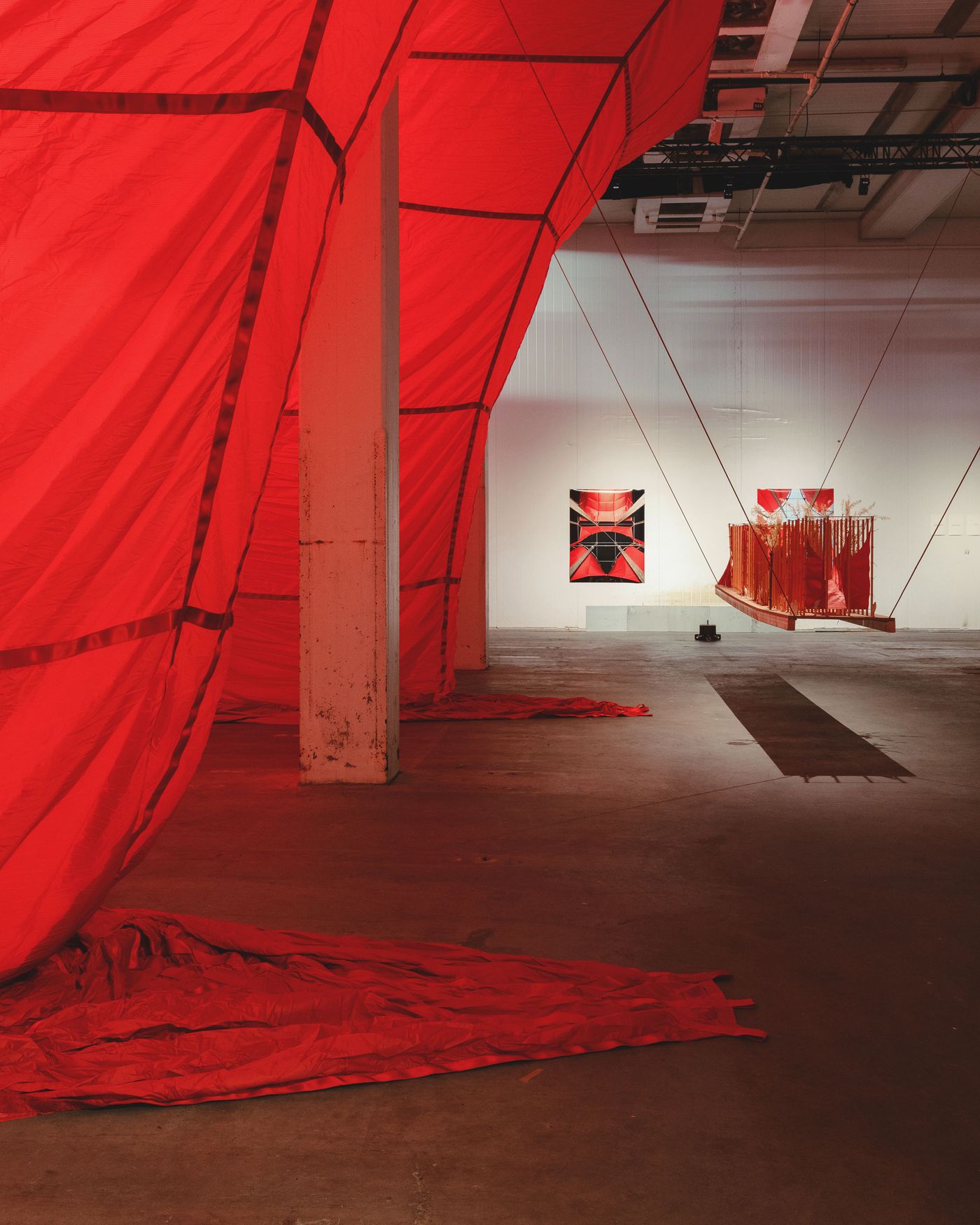
Exhibition view, "The Right Questions: Rethinking Creation in the Age of Technology", curated by Wumen Ghua, at Katoenhuis. Featured: "Parabolic Intersects" by Zelt Studio. Photography by Michèle Margot.

Exhibition view, "The Right Questions: Rethinking Creation in the Age of Technology", curated by Wumen Ghua, at Katoenhuis. Featured: "Parabolic Intersects" by Zelt Studio. Photography by Michèle Margot.
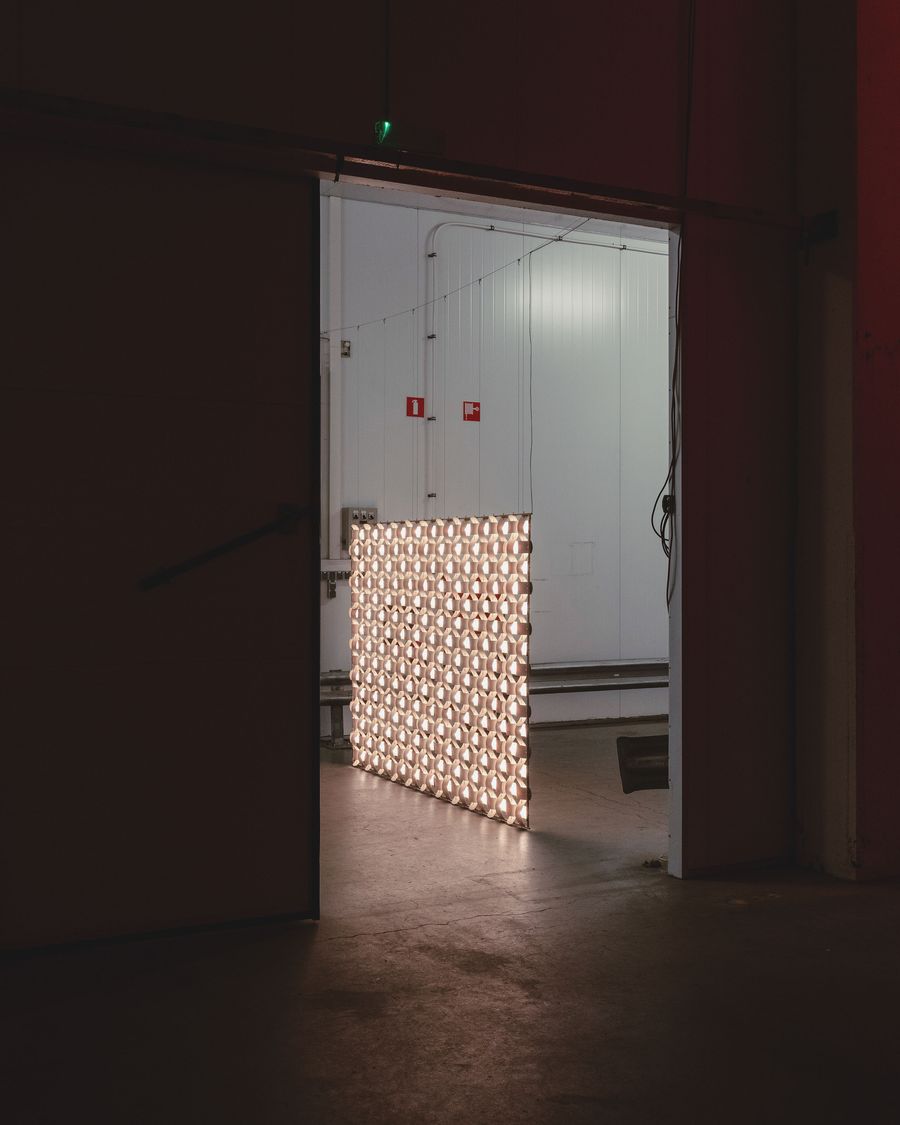
Exhibition view, "The Right Questions: Rethinking Creation in the Age of Technology", curated by Wumen Ghua, at Katoenhuis. Featured: "Tabby" illuminated screen by Rick Tegelaar. Photography by Michèle Margot.
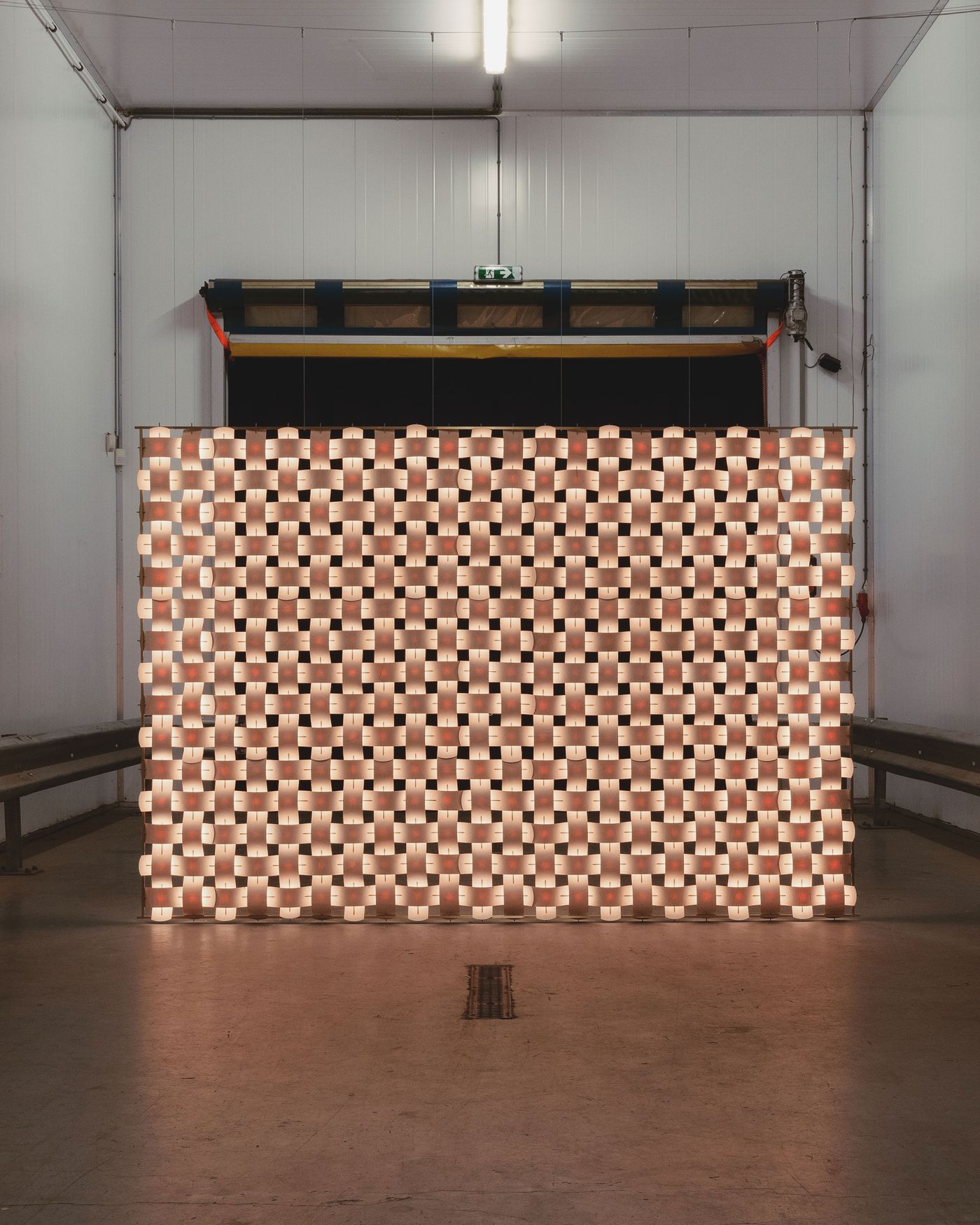
Exhibition view, "The Right Questions: Rethinking Creation in the Age of Technology", curated by Wumen Ghua, at Katoenhuis. Featured: "Tabby" illuminated screen by Rick Tegelaar. Photography by Michèle Margot.
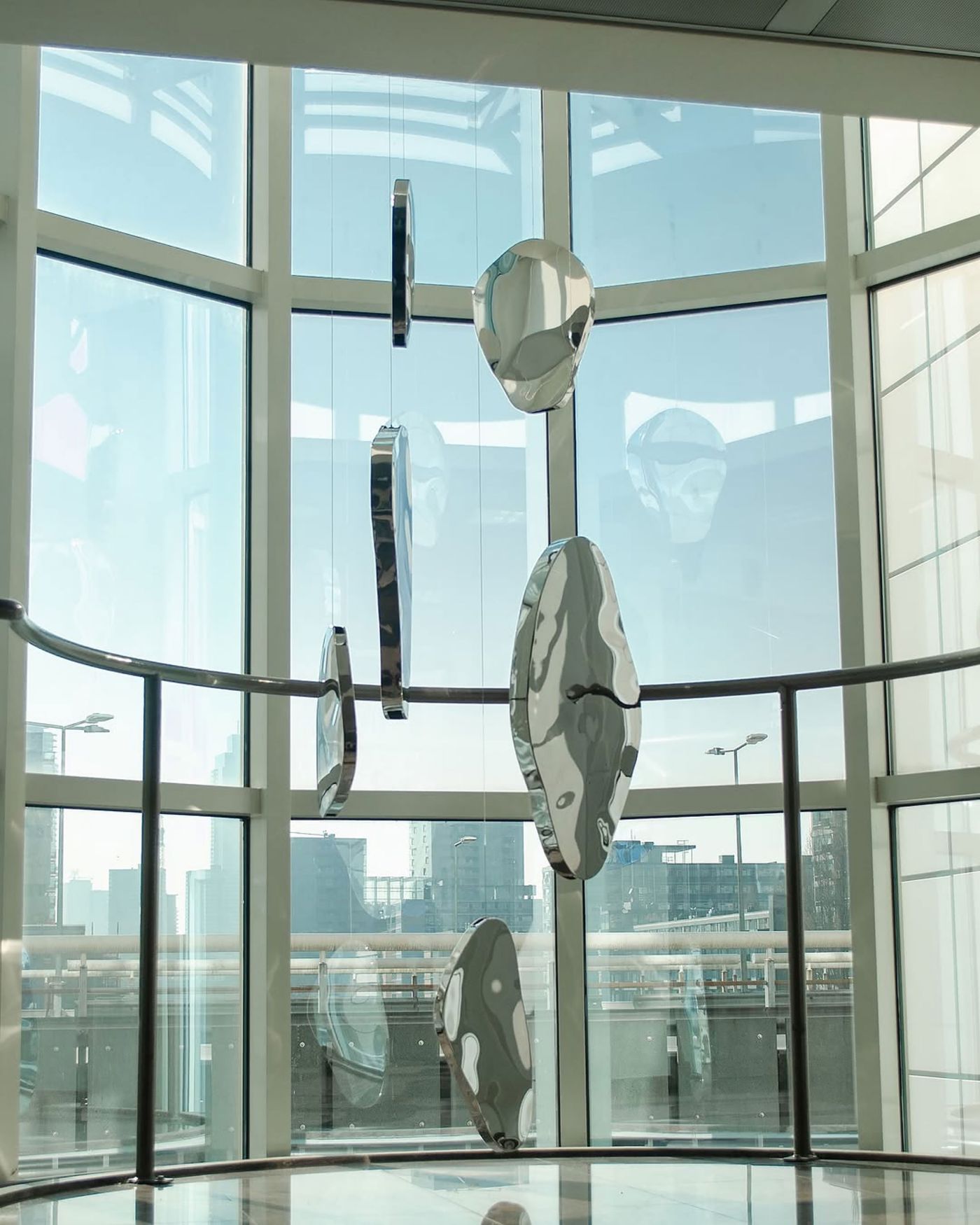
Installation view, "En el Fondo del Mar" by Pepe Valenti at W70. Chrome plated stainless steel.
Meanwhile, W70, the former headquarters of an insurance company on Weena Street, hosted the Biennale's main show, a group exhibition that explored the intersection of the present and the future in furniture design, with several standout participants. Spanish designer Pepe Valenti presented En el fondo del mar (At the Bottom of the Sea), an installation that recreates the sparkling reflections that emerge when sunlight hits the water from the sea, which he described as “a space of absorption for pure energy, a space to heal surrounded by water, and ongoing currents, a volume radiating ultimate peace.” In Congregation of Mysteries, Italian artist and designer Ginevra Petrozzi burned protective symbols into digital screens. “I am currently exploring mysticism and the occult in contemporary techno-politics,” she explained in addressing how in assuming the role of a ‘digital witch,’ she reclaims the sorceress archetype as both healer and political rebel.

Exhibition view, "What's Real is Unfamiliar" at W70, Design Biennale Rotterdam's main show presenting the work of 50 designers. © Design Biennale Rotterdam.
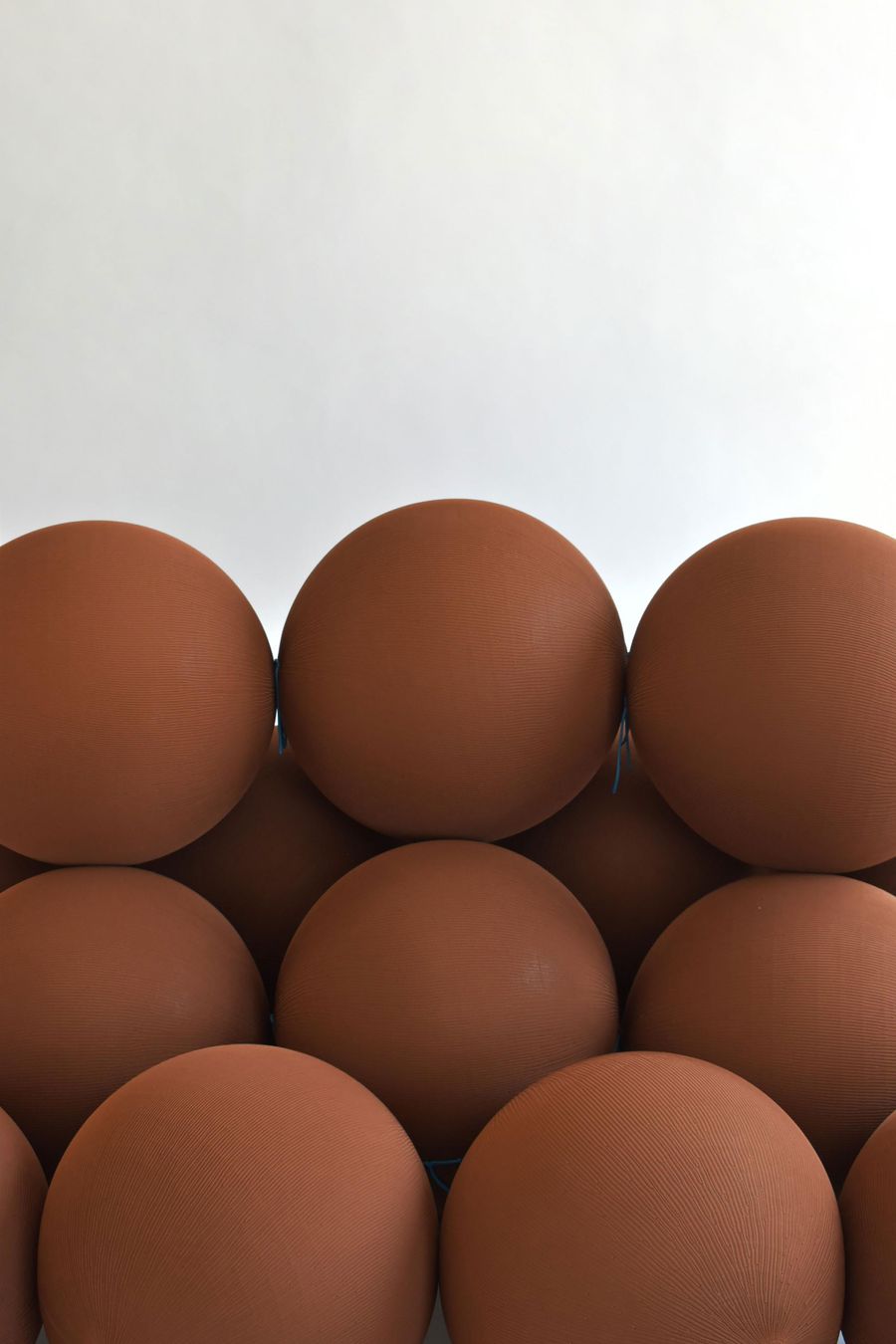
Indefinito, Millebolle modular sofa, 2023. © Indefinito.

Exhibition view, "What's Real is Unfamiliar" at W70, Design Biennale Rotterdam's main show presenting the work of 50 designers. © Design Biennale Rotterdam.
Also at W70, Indefinito, a creative lab founded by Italians Elia Maschio and Giacomo De Paoli, showcased Millebolle, a system of soft, interconnected spheres that challenge conventional design categorization—it’s not a sofa, not a sculpture, but indeed perhaps both. The New Raw, a Rotterdam-based research and design studio run by architects Foteini Setaki and Panos Sakkas that is focused on closing material cycles and strengthening local production also made quite the impression along with Aurelien Veyrat, a French sculptor-designer whose work was also showcased at Rossana Orlandi’s presentation at Nomad St Moritz and at Zaventem Ateliers’ showcase at Collectible Brussels.
Indefinito, Millebolle modular sofa, 2023. © Indefinito.
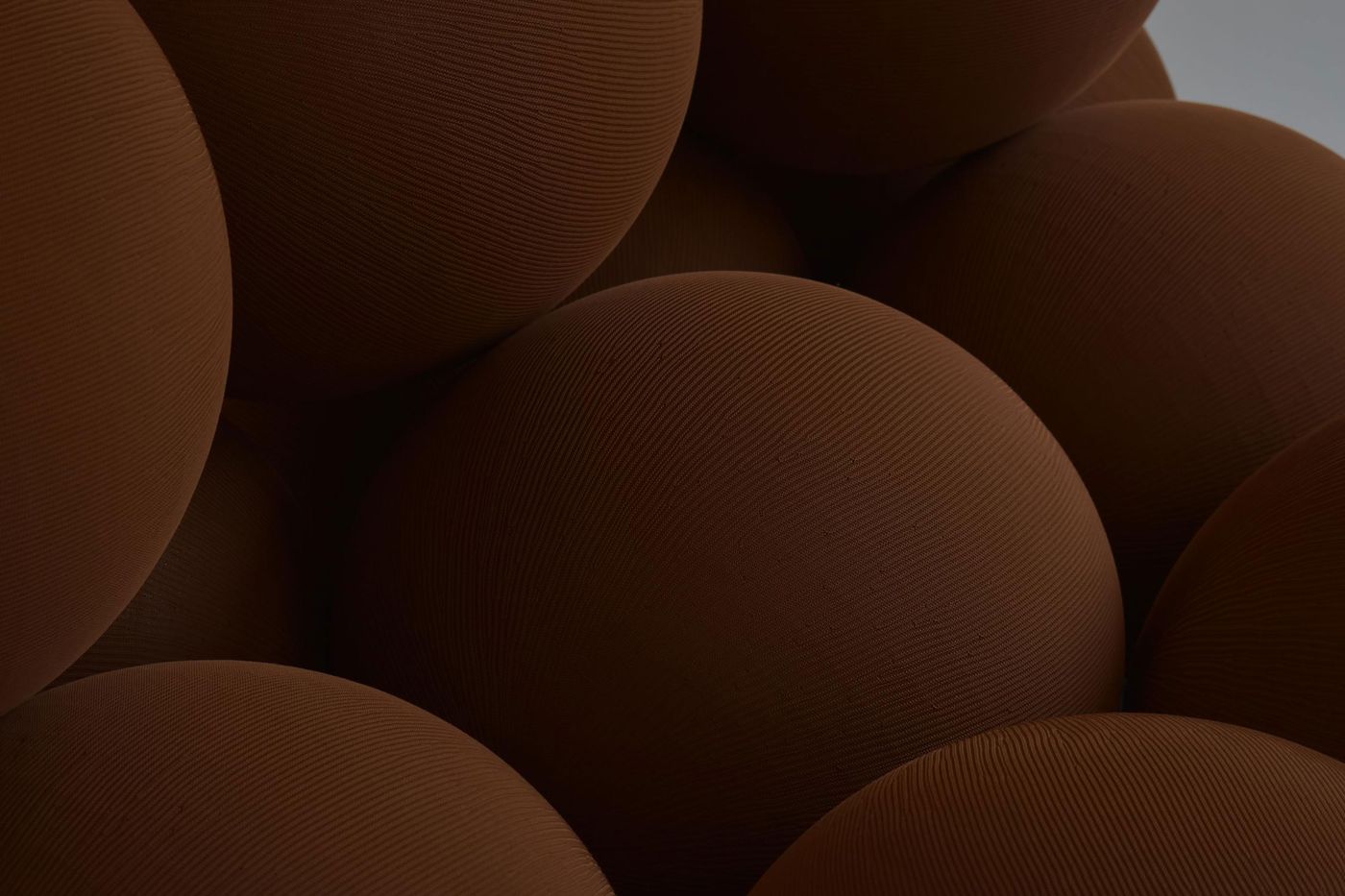
Indefinito, Millebolle modular sofa, 2023. © Indefinito.
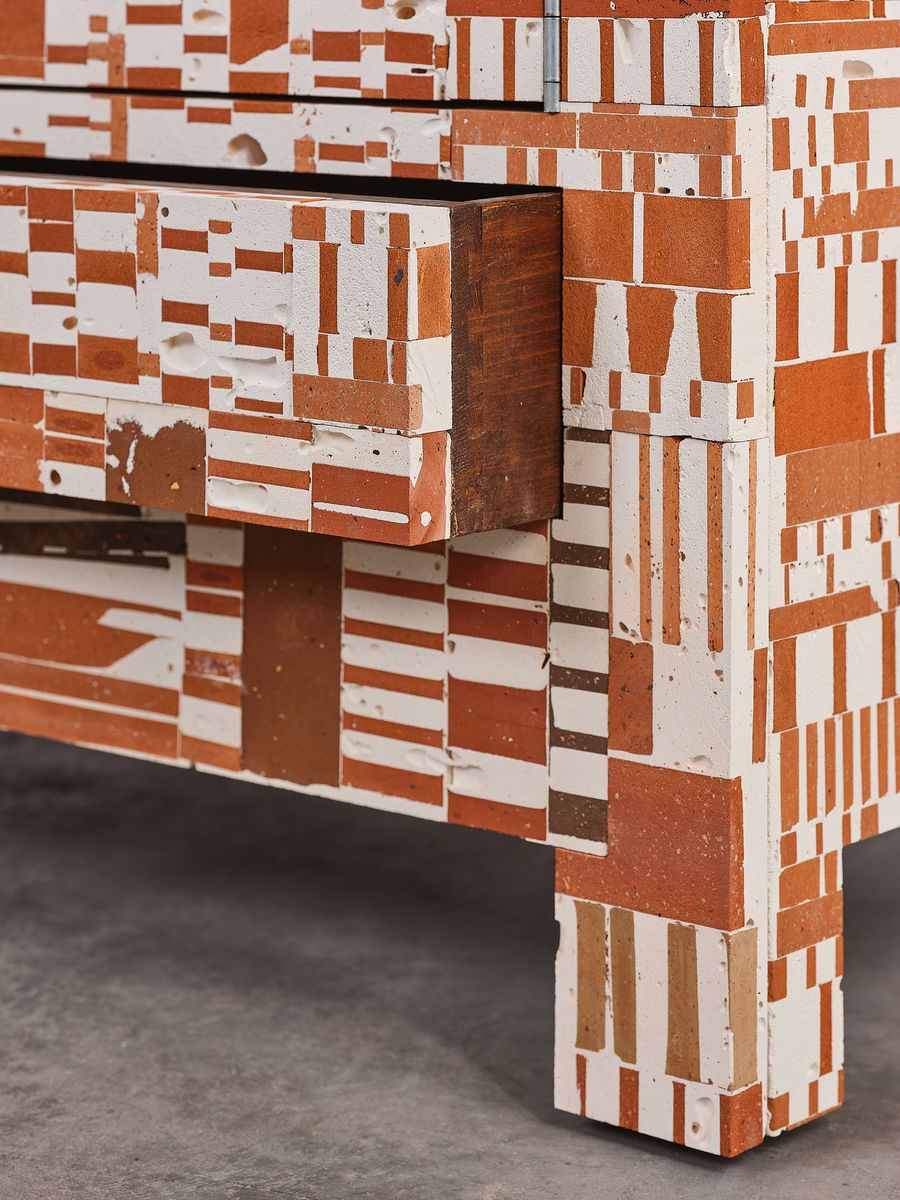
Aurelien Veyrat, Aglomera series, AGF_01 sideboard, 2025. Second hand furniture in oak wood, bricks, plaster, leather. 124 x 53 x 143cm. © Aurelien Veyrat.
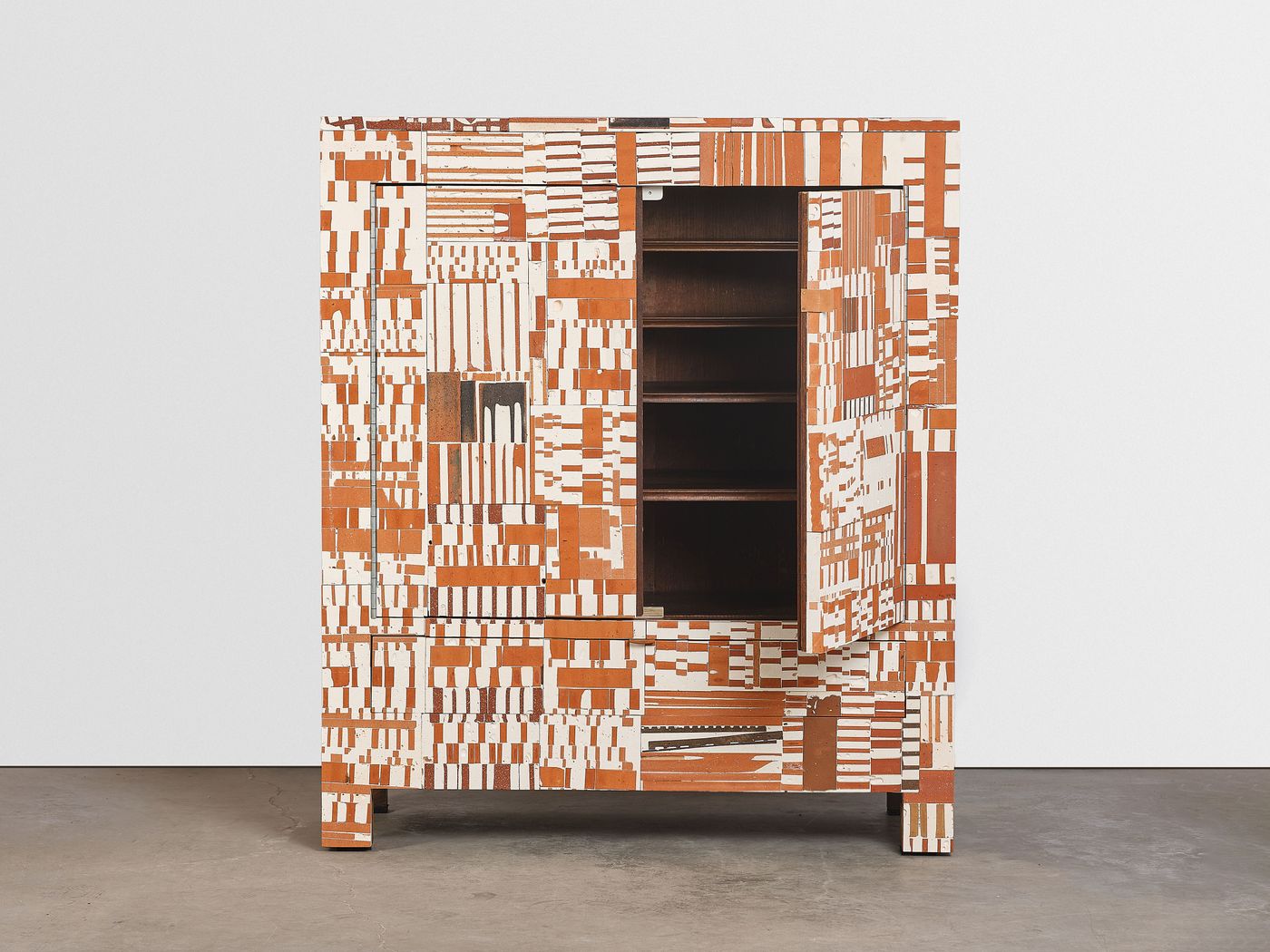
Aurelien Veyrat, Aglomera series, AGF_01 sideboard, 2025. Second hand furniture in oak wood, bricks, plaster, leather. 124 x 53 x 143cm. © Aurelien Veyrat.
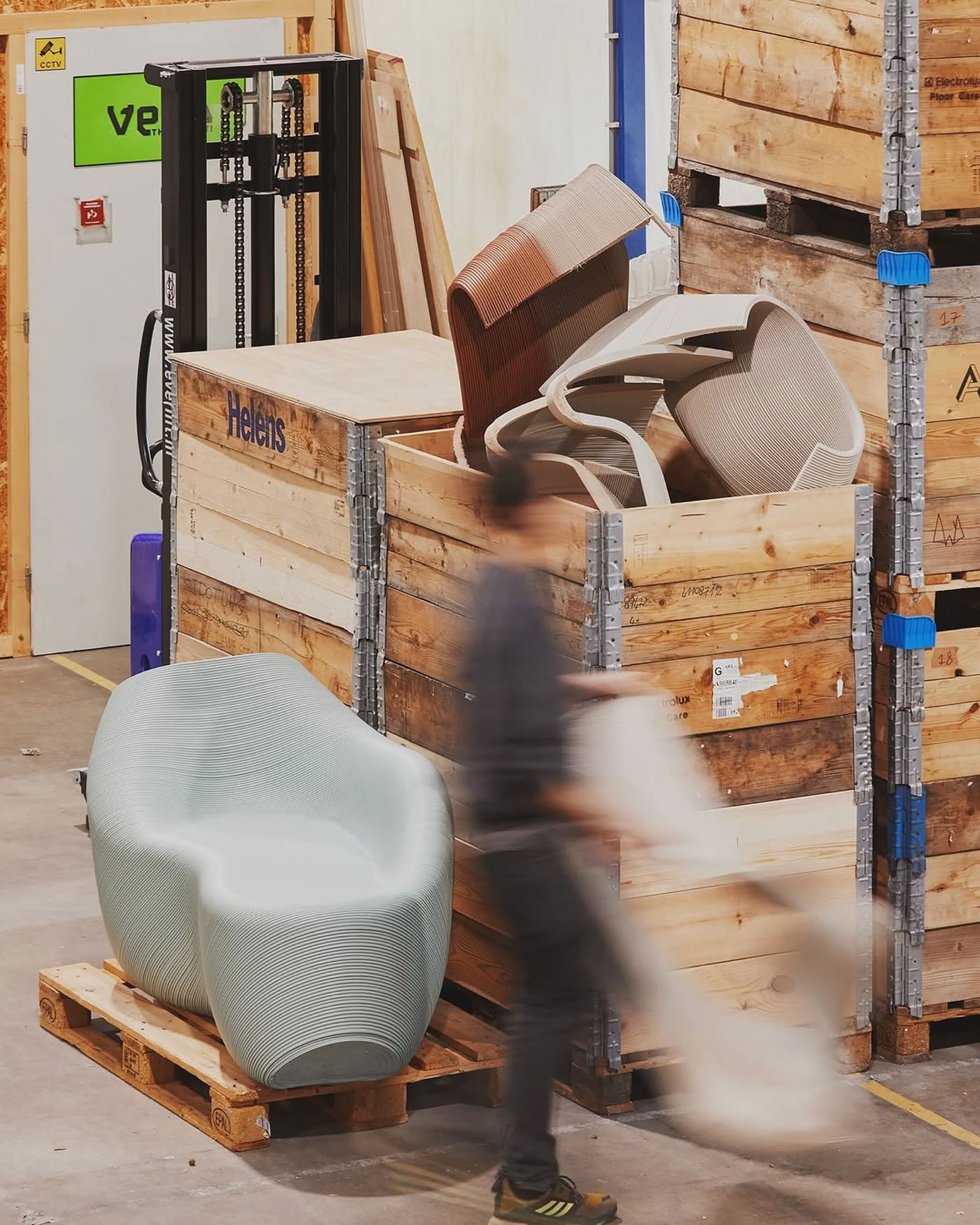
The New Raw. Fabrication laboratory, Rotterdam. © The New Raw.
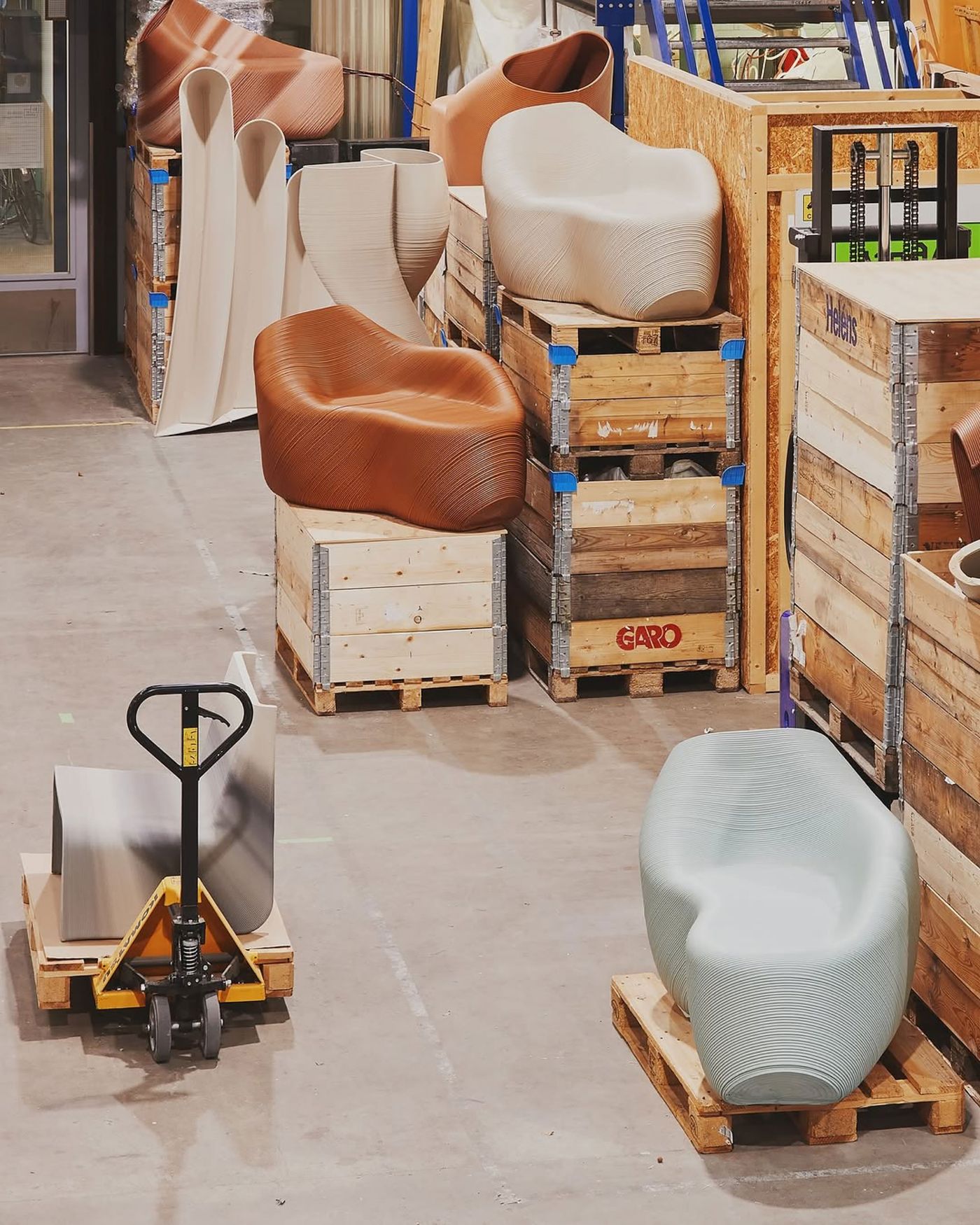
The New Raw. Fabrication laboratory, Rotterdam. © The New Raw.

Exhibition view, "Brancusi Left Paris" by Giulia Cosenza and Jonas Lutz at Huidenclub. Photography by Michèle Margot.

Exhibition view, "Brancusi Left Paris" by Giulia Cosenza and Jonas Lutz at Huidenclub. Photography by Michèle Margot.
At Huidenclub, an experimental space housed in a repurposed industrial building, designers Giulia Cosenza and Jonas Lutz presented Brancusi Left Paris, an homage to the most famous sculptural compositions of all, those of Constantin Brancusi, whose immortal spirit was 'invited' to Rotterdam, 'the city of nonsense' by the designers. “According to Brancusi, ‘the abstract was itself a reality,’” Cosenza explains. “Our work seeks to materialize that philosophy through tactile, evocative compositions."
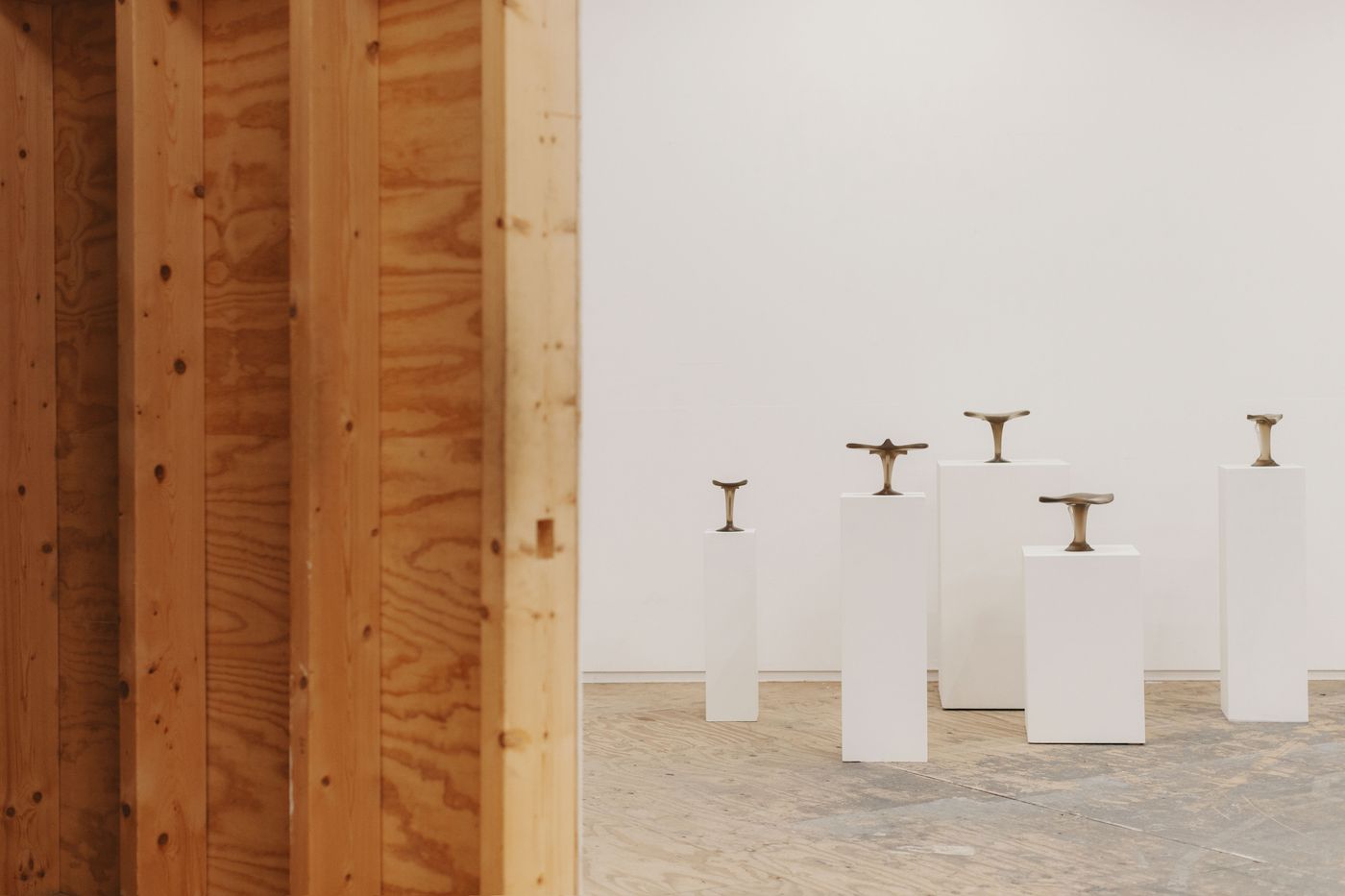
Exhibition view, "Interstices" at Huidenclub. Featured: "Body rest" by Giles Tettey Nartey. Photography by Michèle Margot.
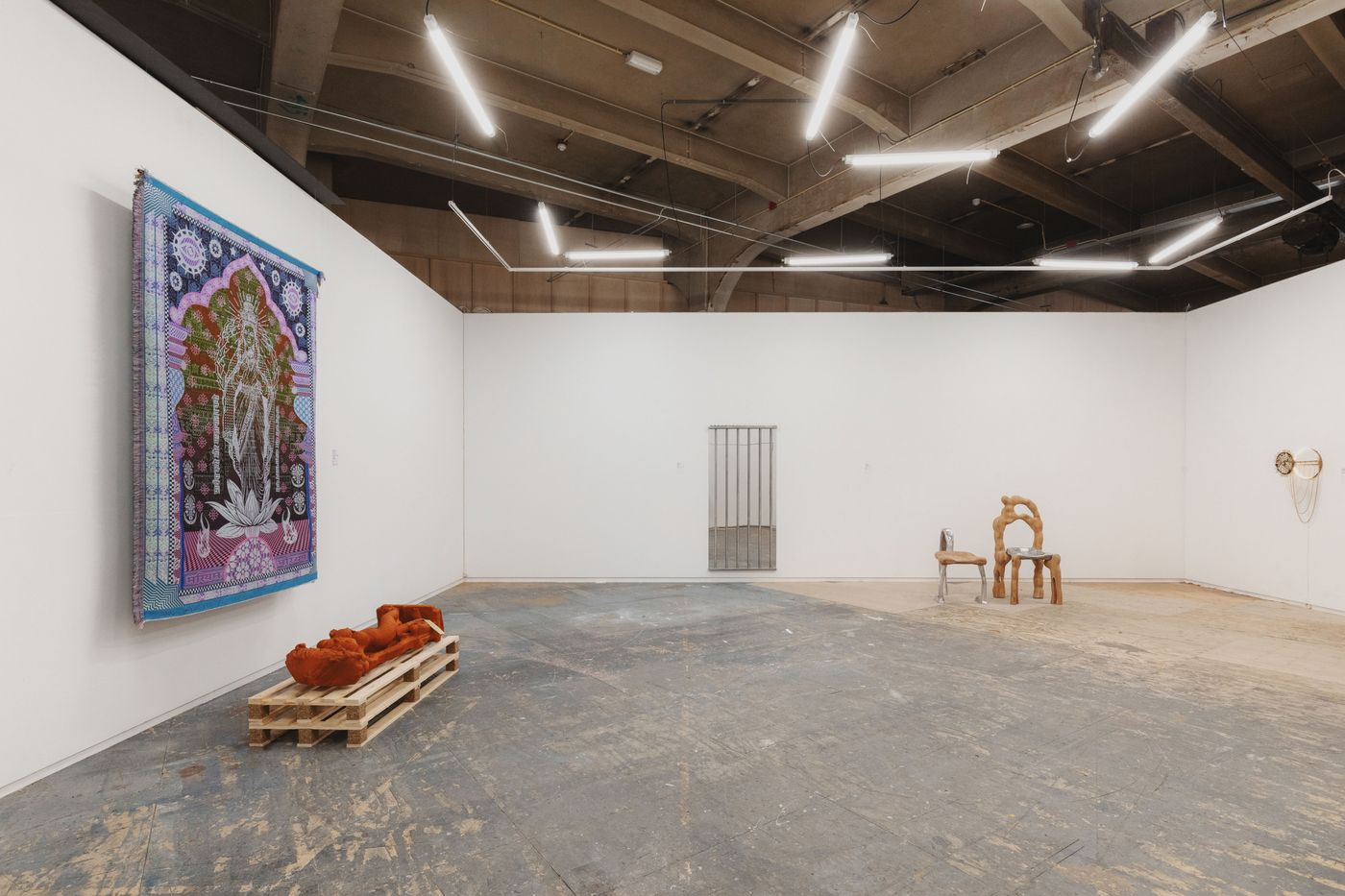
Exhibition view, "Interstices" at Huidenclub. Featured: "A-Wake for heavenly bodies" by Marcos Kueh and Ritvik Khushu + Funda Baysal; "Frontera" by Ciro Duclos; "Parasitic Factors" by Sai.e Studio. Photography by Michèle Margot.

Exhibition view, "Interstices" at Huidenclub. Featured: "Frontera" by Ciro Duclos; "Parasitic Factors" by Sai.e Studio. Photography by Michèle Margot.
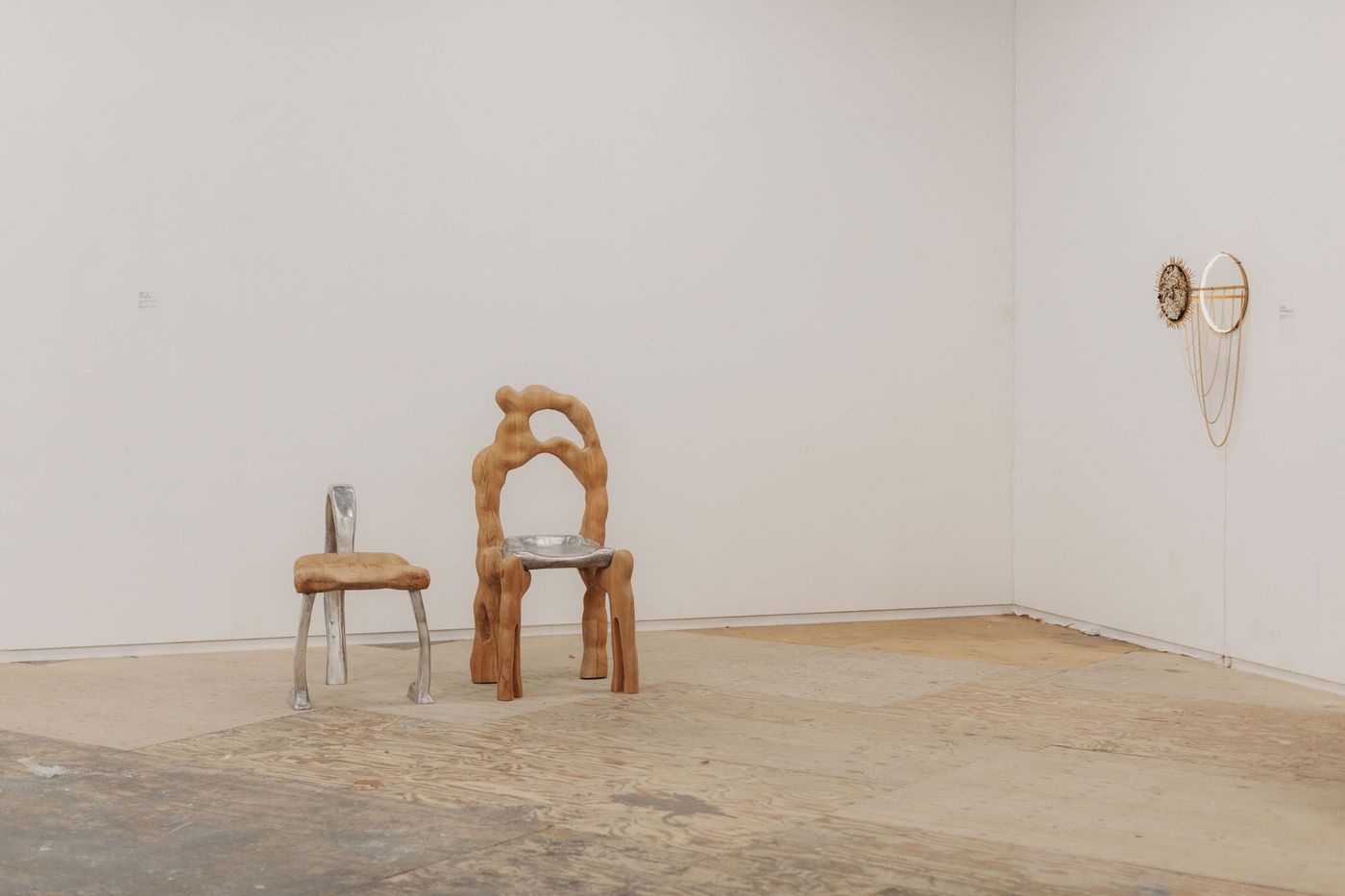
Exhibition view, "Interstices" at Huidenclub. Featured: "The Parasitic Factors" by Sai.e Studio; "La religión es el opio del pueblo" by Alan Hernández. Photography by Michèle Margot.

Exhibition view, "Interstices" at Huidenclub. Featured: "The Parasitic Factors" by Sai.e Studio. Photography by Michèle Margot.

Exhibition view, "Interstices" at Huidenclub. Featured: "The Parasitic Factors" by Sai.e Studio. Photography by Michèle Margot.

Exhibition view, "A Promise of Happiness" at Baanhof - Studio Robert van Oosterom. Featured: "Mass" by Odd Matter. Photography by Jeroen Verrecht.
Meanwhile, at Baanhof, a former electricity substation that now houses the studio of interior architect Robert van Oosterom, the exhibition A Promise of Happiness brought together a group of international artists such as Dutch designer Sabine Marcelis, French artist Audrey Large, and Lebanese sculptor Najla El Zein, who work with unconventional materials pushing the boundaries of execution, further reinforcing the event’s global scope.

Exhibition view, "A Promise of Happiness" at Baanhof - Studio Robert van Oosterom. Featured: Sculpture by Audrey Large. Photography by Jerone Verrecht.
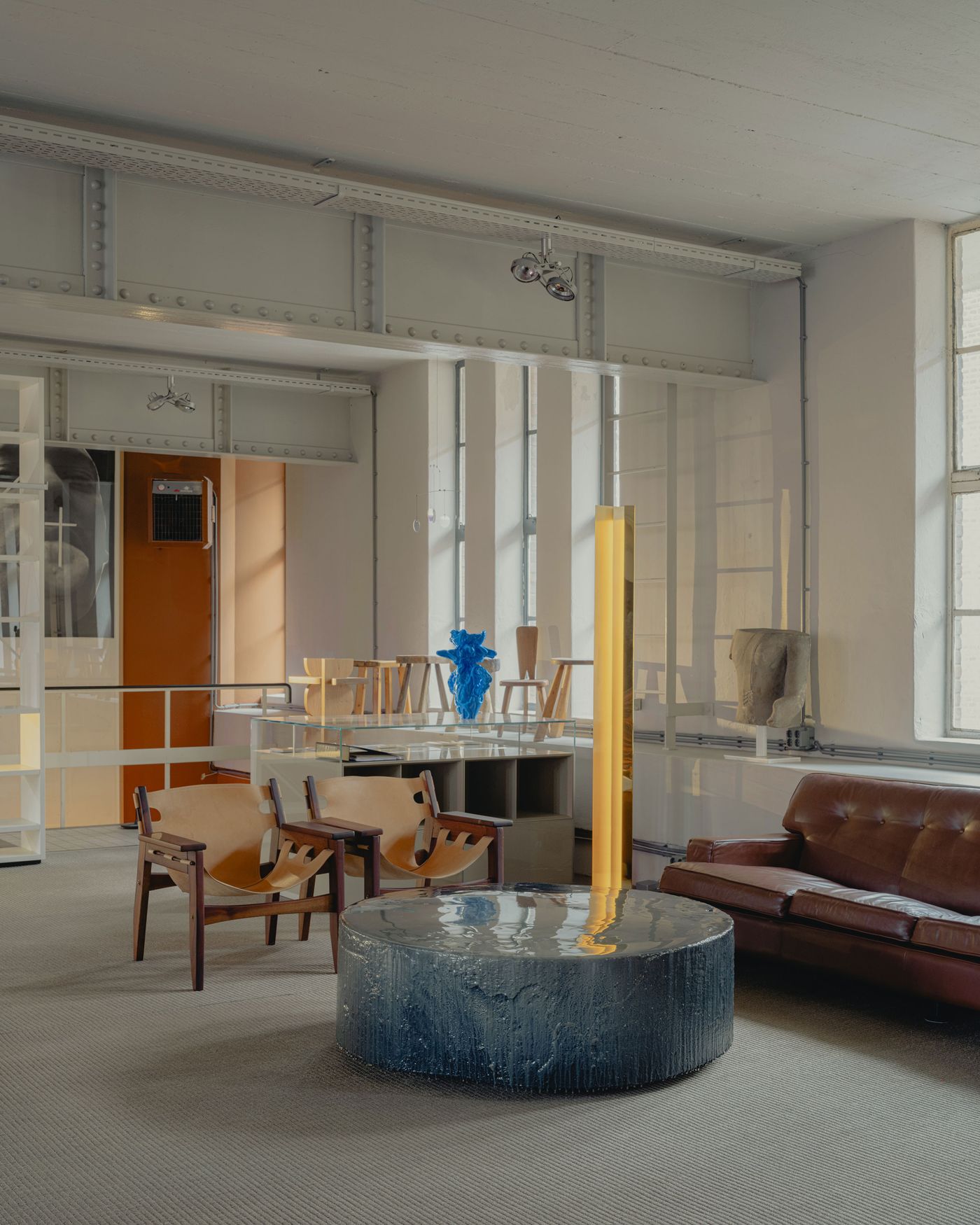
Exhibition view, "A Promise of Happiness" at Baanhof - Studio Robert van Oosterom. Featured designers: Umberto Bellardi Ricci, Middernacht & Alexander, and Audrey Large. Photography by Jeroen Verrecht.
“What is real is unfamiliar, is about welcoming the unknown”, Vaisberg and Schulten claim. “It is based on a famous poem from Rotterdam that says when everyone comes from somewhere else, everyone is a stranger. We want to embrace the unknown in every way possible and imaginable”. This theme serves as a lens through which the Biennale explores unfamiliar narratives, materials, and processes. “It challenges participants to consider how crafted works mediate between tradition and innovation,” the curators explained, highlighting an essential tension in contemporary design: balancing technological experimentation with respect for cultural and historical context.
Rotterdam already boasts a dynamic museum ecosystem, with institutions such as Nieuwe Instituut, led by the internationally renowned Aric Chen, as well as Boijmans Van Beuningen and Kunsthal. While commercial galleries remain few and far between, spaces such as Vivid and Spazio Viruly are making an impact. When asked if the city's design scene connects with its architectural identity, their answer is: “They overlap, but not always,” say Vaisberg and Schulten. “People often work in silos, which is why we created the Biennale—to help build connections across disciplines. And it really worked.” We agree.

Exhibition view, "A Promise of Happiness" at Baanhof - Studio Robert van Oosterom. Featured: "Statica" by Frederik Molenschot. Photography by Jerone Verrecht.
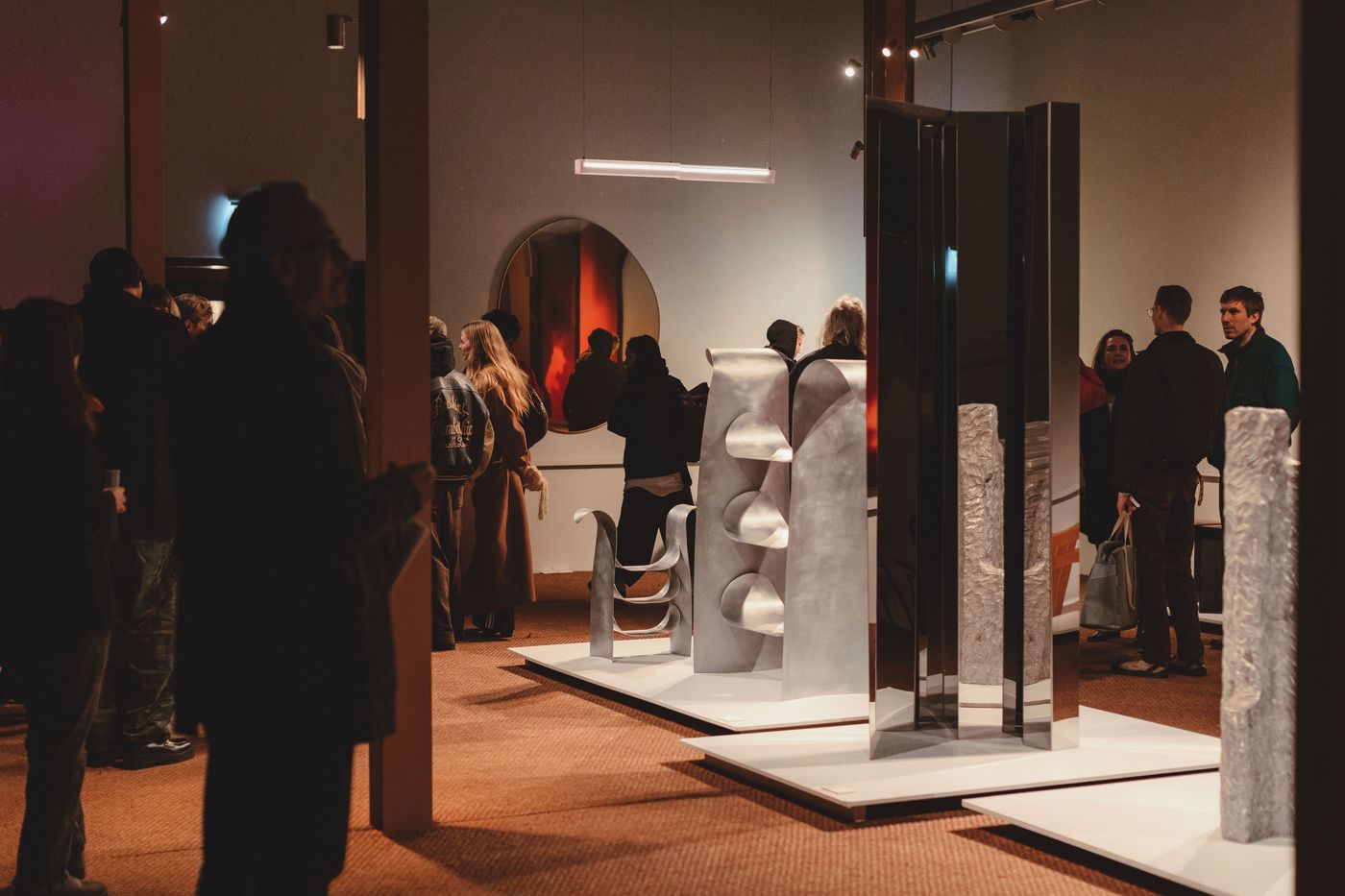
Opening Night of Design Biennale Rotterdam 2025 at Baanhof - Studio Robert van Oosterom. Photography by Michéle Margot.
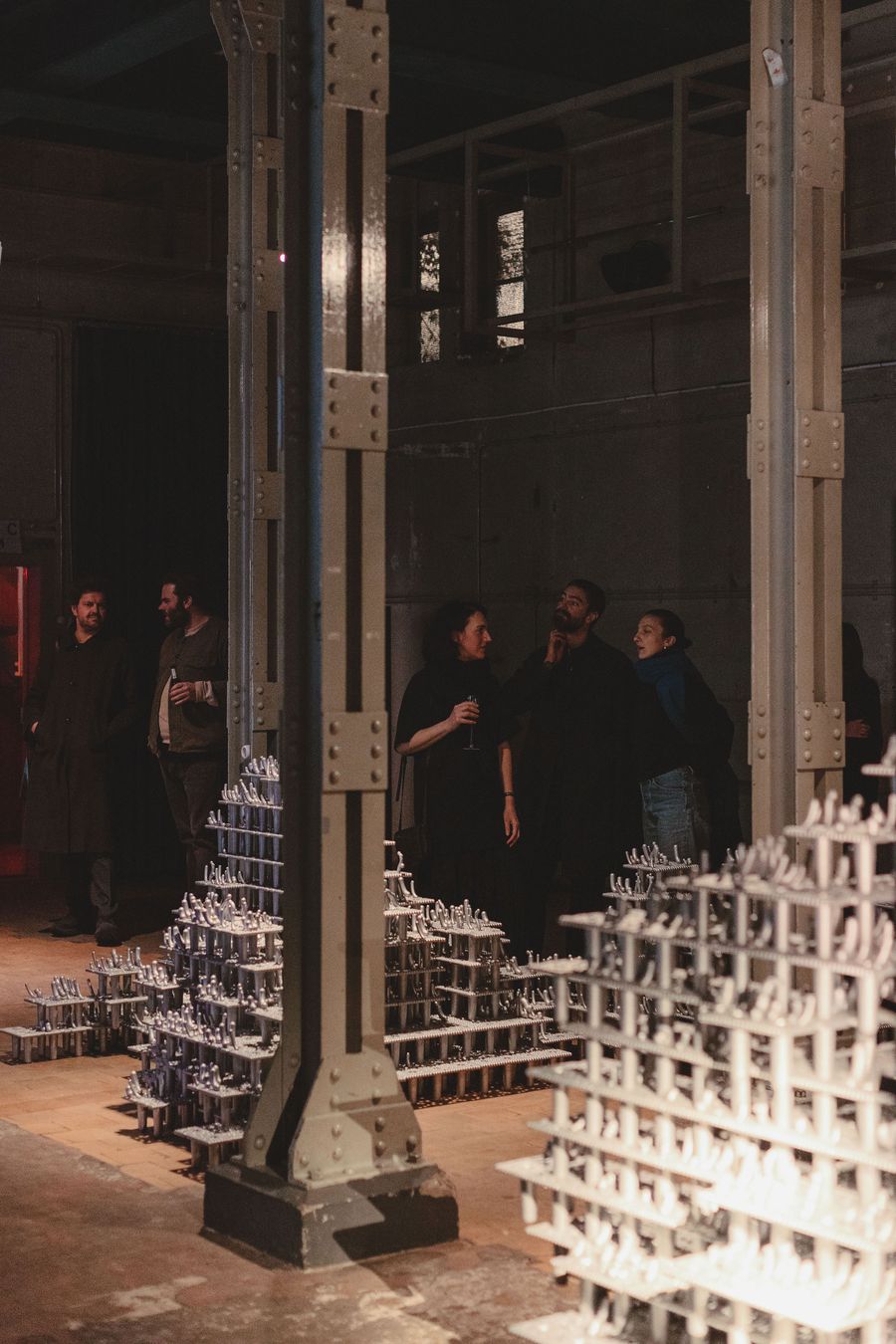
Opening Night of Design Biennale Rotterdam 2025 at Baanhof - Studio Robert van Oosterom. Photography by Michéle Margot.
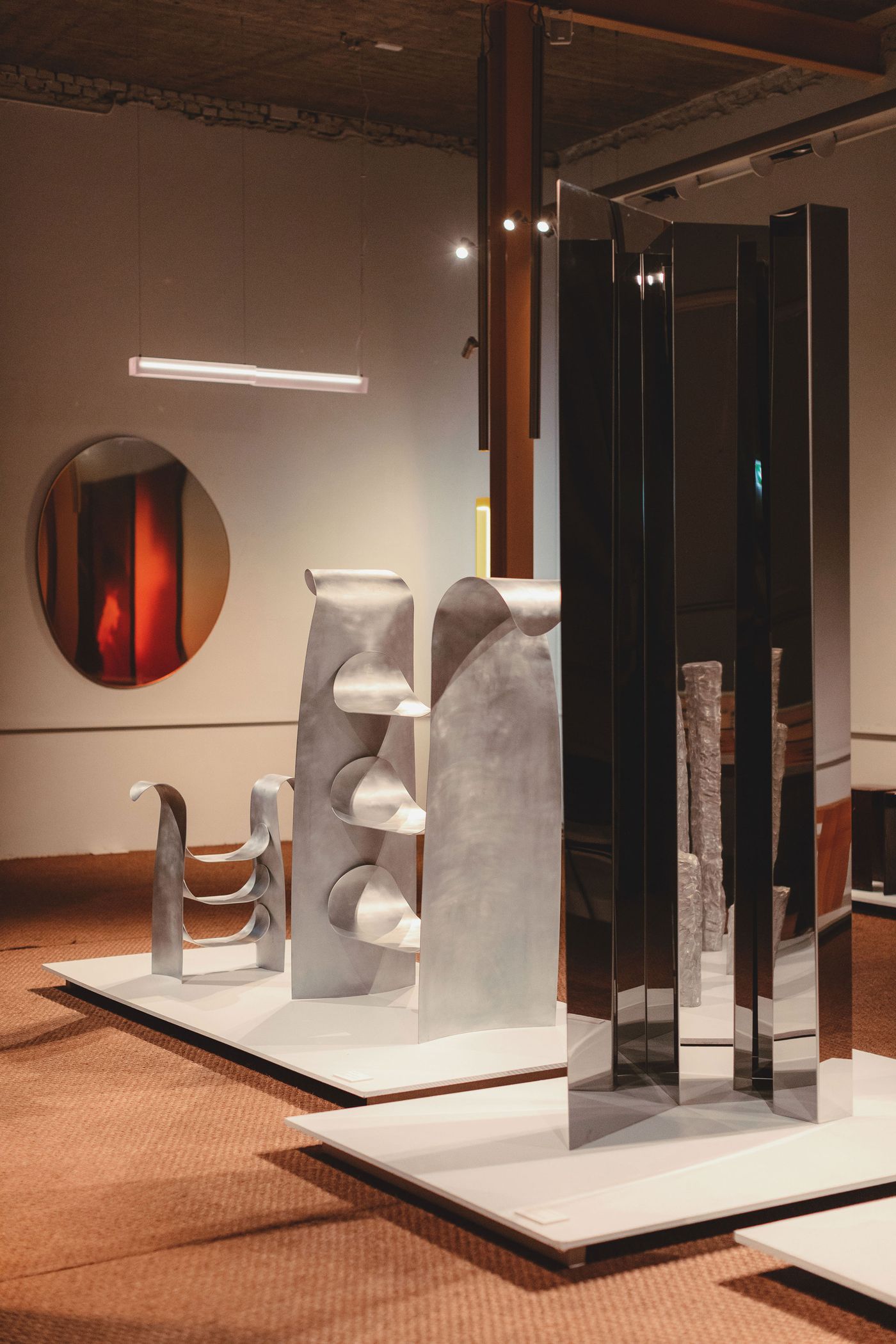
Exhibition view, "A Promise of Happiness" at Baanhof - Studio Robert van Oosterom. Featured designers: Sabine Marcelis, Umberto Bellardi Ricci, Saskia Noor van Imhoff, and Yoon Shun. Photography by Jeroen Verrecht.

Opening Night of Design Biennale Rotterdam 2025 at Baanhof - Studio Robert van Oosterom. Photography by Michéle Margot.
About our guest contributor Paola Carimati
Architect by training, journalist by profession, she has been intertwining research with design and current affairs since the time of graduation at the Politecnico di Milano. Writing is a practice matured and trained in the field: yesterday, in the editorial staff of Elle Decor Italia, today with important Italian magazines of the groups Editoriale Domus, Il Salone del Mobile, Mondadori and Rcs.
